I’m pleased to announce a new composition commission straight from Italy. It will be a piece for 13-course Baroque lute, commissioned by and dedicated to the Italian lutenist and patron of the Baroque lute, Alberto Crugnola.
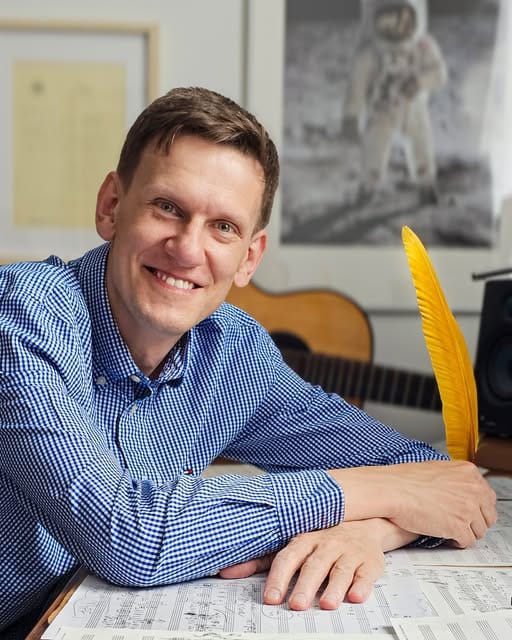
guitarist and composer
I’m pleased to announce a new composition commission straight from Italy. It will be a piece for 13-course Baroque lute, commissioned by and dedicated to the Italian lutenist and patron of the Baroque lute, Alberto Crugnola.

POLONIKA: A Folk-Fantasy, A concert suite in 12 movements and over 1000 bars long, written for two soloists and a guitar orchestra (six voices).
The premiere is in just 7 weeks! I’ll be joined by Mateusz Kowalski, Marcin Chiliński (who will conduct and prepare the orchestra), and participants of the Summer Guitar Festival, under the artistic direction of Krzysztof Pełech.
I already know that we have an overwhelming number of participants for this project! This makes me incredibly happy! Some of YOU will receive your parts in just a few days!
commissioned w/ the support of a grant from the Fundacja Krzyżowa and Ośrodek Kultury i Sztuki we Wrocławiu
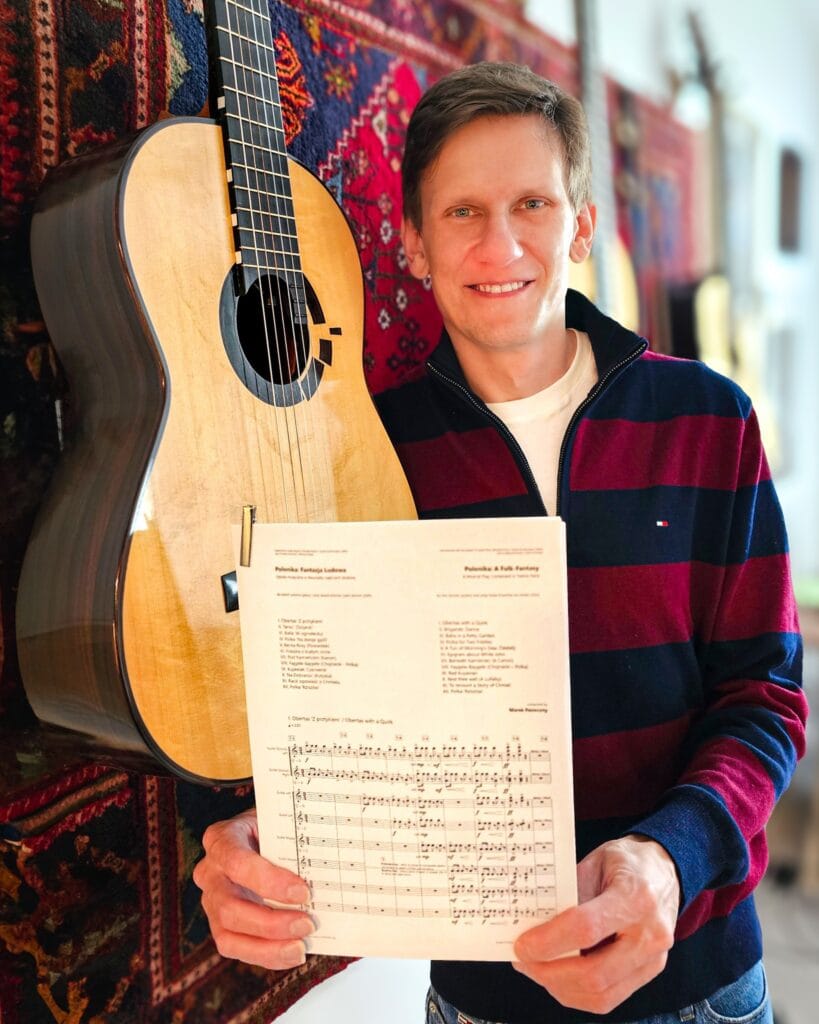
I’m excited to begin work on a brand new, unique commission — a Concerto Suite for two guitars and guitar orchestra.
I’ll be joined by Mateusz Kowalski, Marcin Chiliński (who will conduct the orchestra), and students of the Summer Guitar Festival, under the artistic direction of Krzysztof Pełech.
And YOU can be part of it too! Join us HERE
The piece was commissioned with the support of a grant from Ośrodek Kultury i Sztuki we Wrocławiu (OKiS) and Fundacja Krzyżowa / Stiftung Kreisau

I feel honored to be part of the Warsaw Guitar Conference for the third time. It is always a great privilege for me. World-class organization and stunning venues – this year not only at the Uniwersytet Muzyczny Fryderyka Chopina but also at the Royal Łazienki Museum!


The WATER-HORSE SUITE, for solo guitar, Inspired by “The Water-Horse of Barra” – a Scottish folktale as told by Winifred Finlay. Commissioned by and dedicated to Scottish guitarist Stewart Kelly.

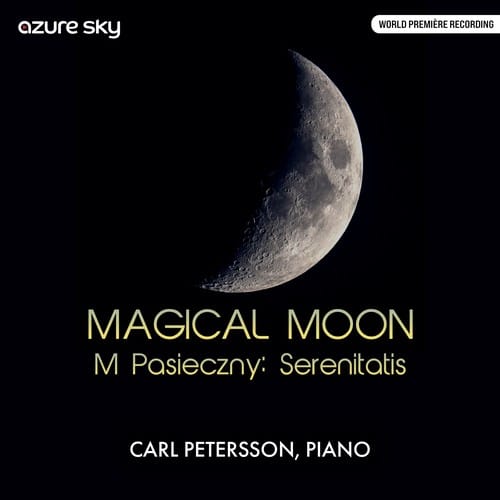
Serenitatis (for piano solo) now available on all major platforms! Click HERE for more about the piece.
It is one of two solo piano miniatures recorded by the phenomenal Swedish-born, Canada-based pianist Carl Petersson for the Azure Sky label, as part of an album titled „MAGICAL MOON”.
The album will feature piano pieces inspired by the moon, composed by Beethoven, Debussy, Fauré, Dvořák, Godowsky, Hisaishi, Pasieczny, and others. A new piece will premiere each month during the full moon…
Recording engineer: Grant Rowledge
Piano model: Steinway D
ORDER SCORE CONTACTING US DIRECTYL via e-mail: slepayment@gmail.com
five-movement SONATA for Solo Guitar is now complete. Inspired by Signs by the Roadside, a book by Serbian Nobel Prize-winning novelist Ivo Andrić. Commissioned by and dedicated to my dear friend and extraordinary musician, Vojin Kocić
SONATA: Echoes from the Roadside (for Guitar Solo)
The world premiere will take place next month in Switzerland during Rencontres Guitares in Bulle on March 23, 2025
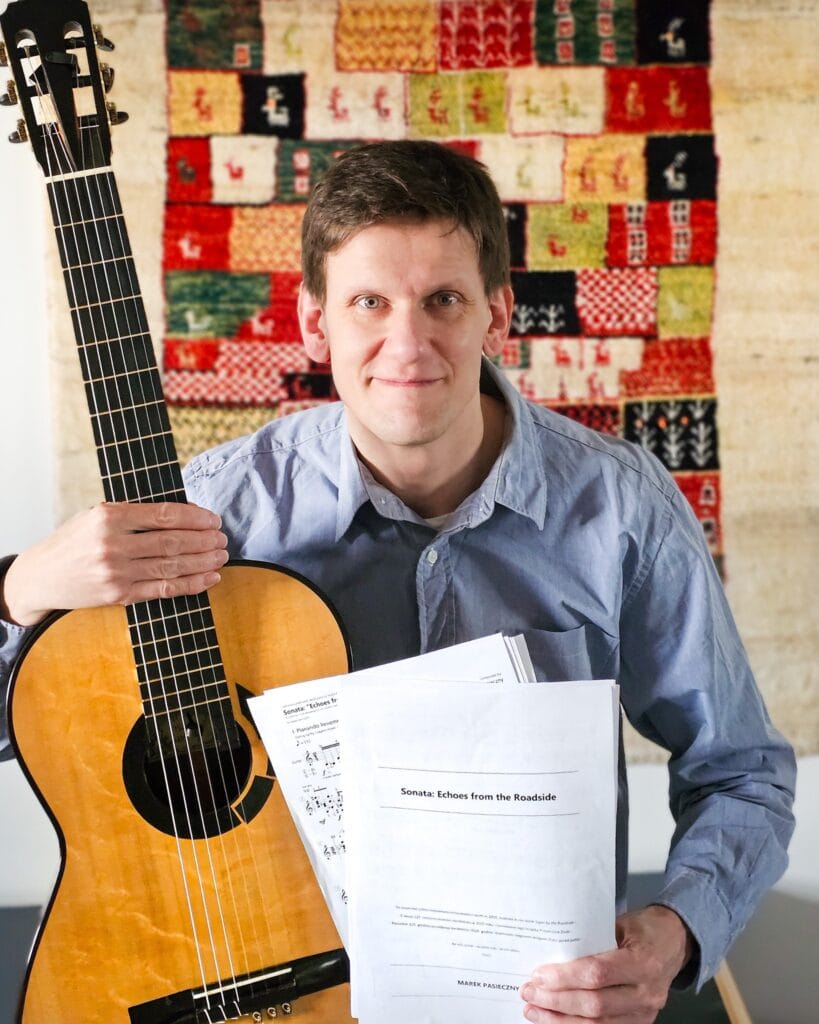
An extended version of my triptych: (SZOPEN) RE:MEMBERING —this time in a very unusual instrumentation for Guitar and Percussion (Marimba, Vibraphone, Crotales & Rainstick)—is now finished! The premiere is just under two weeks away in Warsaw, performed by two outstanding virtuoso musicians: Mateusz Kowalski (guitar) and Miłosz Pękala (percussion)
Where: Museum of the University of Warsaw, Poland
When: 5th of March, ’25
This composition was commissioned thanks to the support of the Museum of the University of Warsaw.
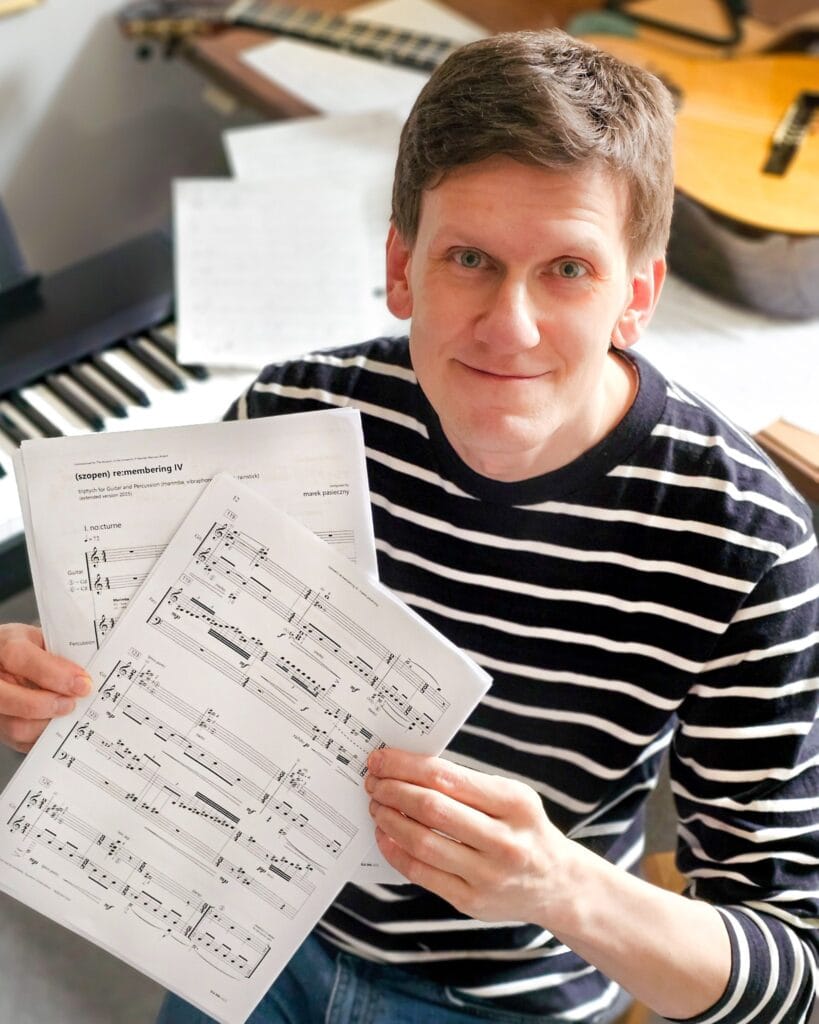
The new Sonata for solo guitar is nearly complete! It’s a large-scale work expanding into five movements, inspired and shaped by the book Signs by the Roadside by Nobel Prize-winning Serbian writer Ivo Andrić. Commissioned and dedicated to the amazing musician and guitar virtuoso Vojin Kocic. The world premiere will take place next month in Switzerland during Rencontres Guitares in Bulle on March 23
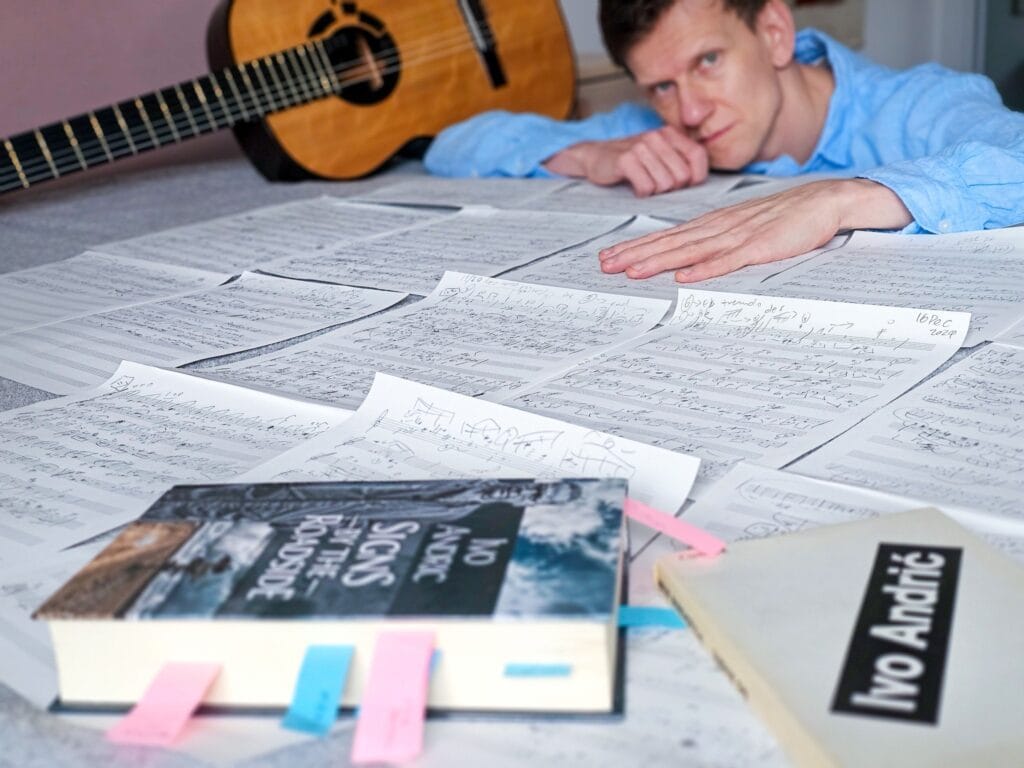



Excited to share that 18 students (!) will give the world premiere of my RECURSIVE REFLECTIONS II (35 Variations & Fugue) – for Three Marimbas
▪️This Thursday, February 6, Bates Recital Hall, 7:30 pm | The University of Texas at Austin
▪️The UT Percussion Ensemble, under the direction of Prof. Thomas Burritt, will perform the piece with the following student groupings:
▪️Variations 1–10
Left: Justin
Middle: Ethan
Right: Kevin
▪️Variations 11–17
Left: Erica
Middle: Michael
Right: Bryce
▪️Variations 18–22
Left: Sean
Middle: Meghan
Right: Gage
▪️Variations 23–26
Left: Aaryn
Middle: Randy
Right: Spencer
▪️Variations 27–34
Left: Sebastian
Middle: Davin
Right: JP
▪️The Fugue (Theme), Variation 35
Left: Ashley
Middle: Marcos
Right: Matt

Afterimages (Powidoki) by Marek PASIECZNY
Sonata for marimba solo
I. Blurred II. Gossamer III. Ragged IV. Zesty
„When we look at an object, its reflection is formed in our eye. The moment we stop looking at it and shift our gaze elsewhere, a afterimage of the object remains, a trace of the object, with the same shape but an opposite coloration. The afterimage, afterimages, are the color of the interior of the eye that has looked at a certain object. Because a person truly sees only what they make themselves aware of.”
Władysław Strzemiński (1893-1952), Polish painter, art theorist, publicist, educator.
Definition
The above quote is a simple, very painterly, almost poetic, and for me, incredibly inspiring definition of a phenomenon called an afterimage. But what is an afterimage from a scientific perspective?
An afterimage is a physiological phenomenon where an image persists in the visual system after the exposure to light stimuli has ceased. It results from changes in the activity of retinal photoreceptors, particularly the cones, which become adapted due to prolonged stimulation. This leads to the appearance of a complementary image in the form of a negative or positive afterimage. This phenomenon is the result of the exhaustion of the photoreceptors’ sensitivity to certain wavelengths of light, followed by their recovery.
For many years, intrigued by this phenomenon, I wanted to transfer its aspect (image, vision) into the world of music and sound.
„Because a person will truly only see what they are aware of” (W. Strzemiński) – moving further, not just what we see, but also what we hear.
How we perceive and experience the world is extremely subjective. Looking at the same object in space or listening to the same piece of music, each of us will perceive, experience, and interpret it completely differently. Our emotions, life experiences, act as a unique filter through which we first process objective (created by someone else) visual or auditory stimuli, which are then transformed by us and remain within us as an 'afterimage’.
Form
Afterimages is written in a loose sonata form. On one hand, it is a monolithic, one-movement sonata, where traditional divisions into distinct sections are blurred, and the form is more flexible. On the other hand, the component sections still exist, interpenetrating and interacting with each other.
Each of the titles of the four main subsections represents my impulsive and subjective perception of the respective part. These are not balanced, composer’s characterizations of the section, but rather my personal „afterimages” — quick, intuitive „glimpses” of the section, which I describe with a single word that feels closest to me. These are Blurred, Gossamer, Ragged, and Zesty.
Afterimage and Music
The element of the „afterimage” is also reflected in the compositional material. Fragments and harmonic-rhythmic structures that appear in one section often return in a form of reminiscence, serving as a kind of „afterimage” of themselves in adjacent sections.
Another aspect of the afterimage phenomenon in this sonata is the constant, yet consistent and very fluid transition between slow, open, ethereal fragments and faster, energy-charged ones. This represents my musical (auditory) stimulation of alternating complementary images, in the form of both negative and positive afterimages.
Afterimage as opposed to the Marimba Idiom
I am a composer, but not a percussionist. My perception and experience of the marimba are my very subjective, personal, and, of course, musical „afterimages.”
I wanted to capture the essence of the marimba in as varied and colorful a way as possible (in terms of timbre), almost like a painter’s palette. This is why I used the bow in „Blurred” or light preparations in „Zesty,” as well as changing mallets during the performance of „Afterimages.” But that’s not all – the melodic aspect of the marimba, in the form of a winding monophony, constantly intertwines with the harmonic aspect, where four-note chords appear.
The style of „Afterimages” is intentionally undefined. I wanted to show different faces of the marimba – my various perspectives (afterimages) on this instrument. „Blurred” is impressionistic, „Gossamer” – post-romantic, „Ragged” – post-minimalistic, and „Zesty” – distinctly jazz and swinging in its character. For me, it’s a very positive, bright, and energetic sonata, bursting with colors and ideas.
„Afterimages” was written as a commission from the University of Texas at Austin and is dedicated to my friend, the distinguished percussionist and educator, Thomas Burritt.
Marek Pasieczny
I’m thrilled to announce a new commission from my dear friend, guitarist, and brilliant musician, Vojin Kocić: A multi-movement piece for solo guitar, inspired by the works of Serbian poet, writer, and Nobel Prize-winning novelist Ivo Andrić.
The world premiere will take place in Switzerland during Rencontres Guitares in Bulle on March 23, 2025.

Afterimages (Powidoki): Sonata for Marimba Solo (in four mvnts) is nearly complete!
This new commission is supported by funding from The University of Texas at Austin and is dedicated to the brilliant percussionist, Prof. Thomas Burritt. The premiere will take place at the prestigious PASIC (Percussive Arts Society International Convention)—one of the largest percussion events worldwide—in fall 2025 in Indianapolis, Indiana, USA.
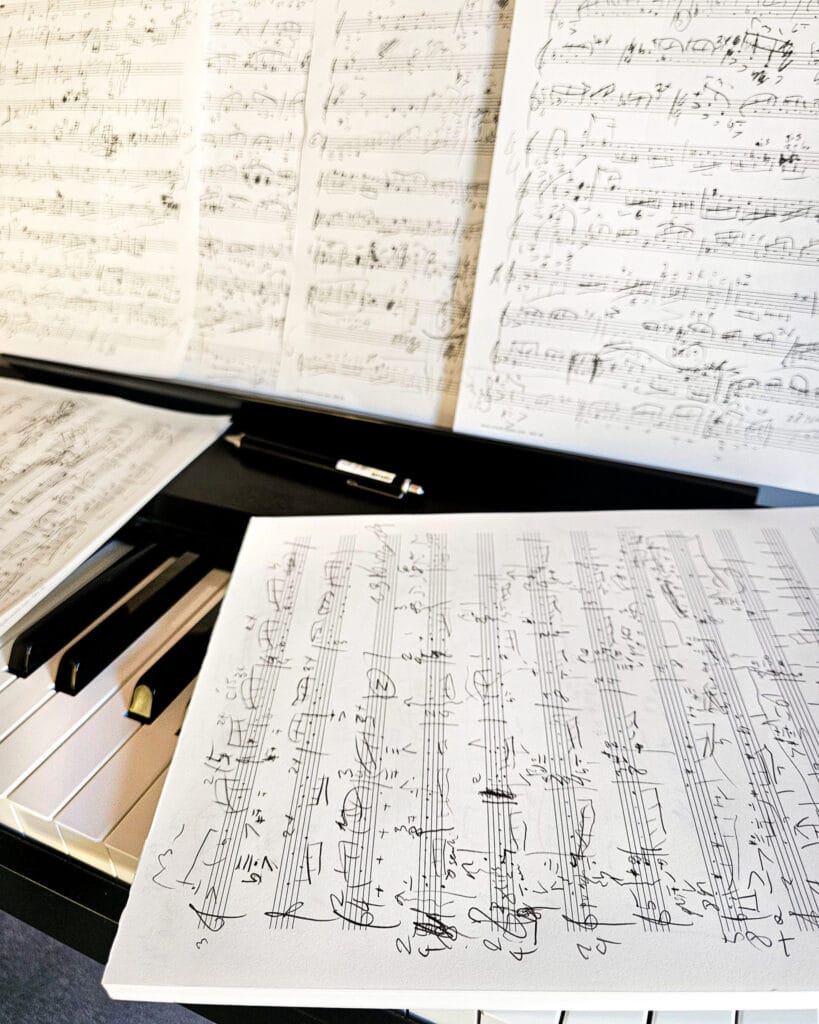
The reimagined and newly arranged version of RECURSIVE REFLECTIONS II: 35 Variations and a Fugue for Three Marimbas has been officially completed! The premiere will take place on February 6, 2025, at the The University of Texas at Austin. The piece will be performed by the UT Percussion Ensemble under the direction of Prof. Thomas Burritt

I had the extraordinary pleasure of leading guitar workshops at the Akademia Muzyczna w Gdańsku. This was made possible thanks to the great organization and welcoming atmosphere created by the wonderful teacher and outstanding guitarist, Monika Dżuła-Radkiewicz.
Thank you to all the students for your beautiful playing and collaboration – I hope to see you again!
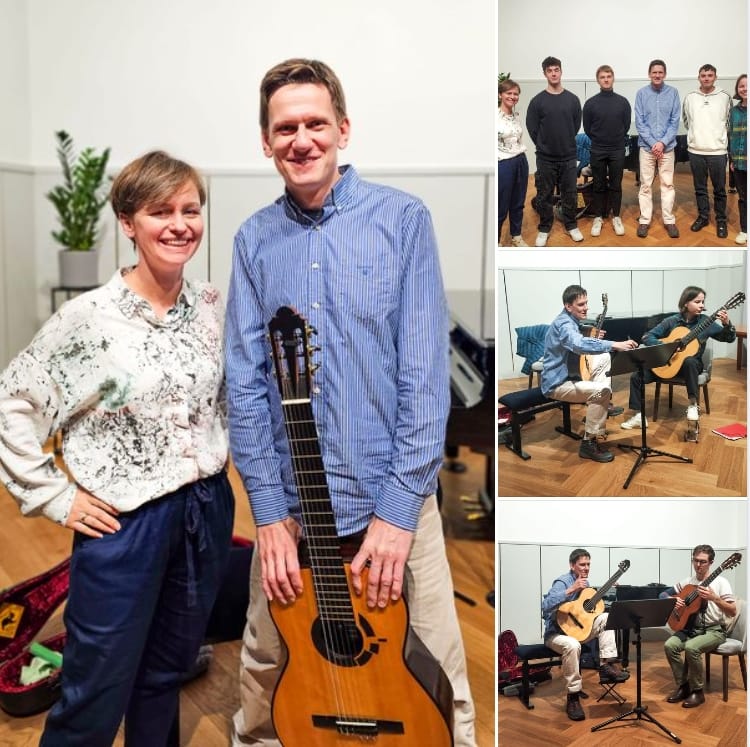
„Nine Polish Impressions” has been recorded!
This is a set of nine miniatures based on the most famous Polish folk melodies, reimagined and reharmonized. The recordings feature the incredible musicians, Mateusz Kowalski and Andrzej Grygier.

Standing ovation after our trio concert at the 4th Nadmorski Festiwal Gitarowy Martinez w Gdyni.
Together with outstanding musicians and one of the best guitarists around: Andrzej Grygier and Mateusz Kowalski, we gave premiere to my newly re-composed „Nine Polish Impressions” and performed monumental „Recursive Reflections: 35 Variations & Fugue.”
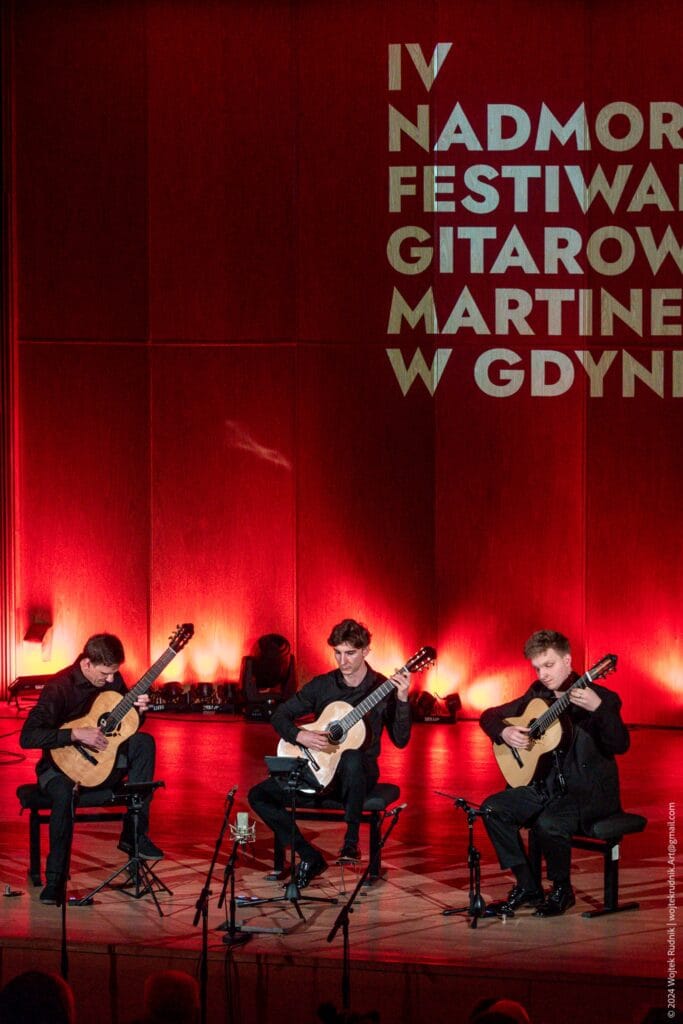
photo by Wojtek Rudnik
I’m excited to share a new commission for a marimba solo piece, supported by The University of Texas at Austin and Professor Thomas Burritt
The premiere will take place at the prestigious PASIC Percussive Arts Society International Convention, one of the largest percussion events worldwide, in fall 2025 in Indianapolis, Indiana, USA.
Additionally, I’m developing a version of 'Recursive Reflections II: 35 Variations & Fugue’ for Marimba Trio.
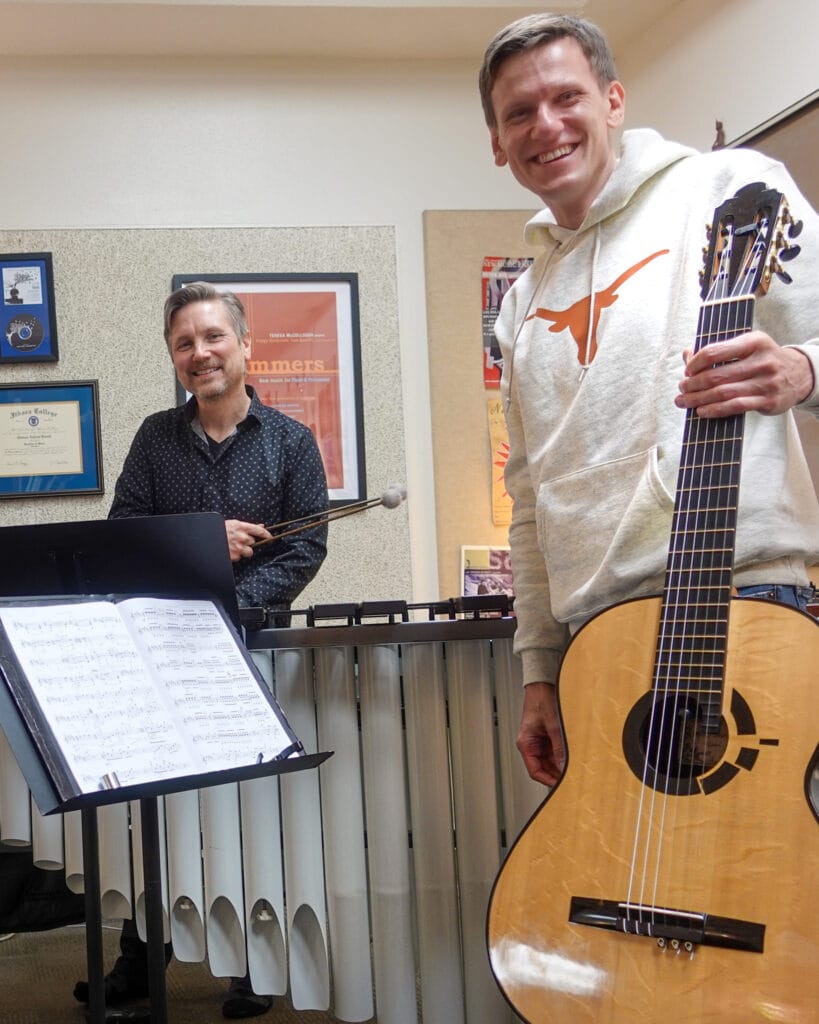

Max’s Lunar Lullaby for piano solo FULL SCORE is now available to PURCHASE
“I composed this miniature at the piano, spontaneously, while improvising on March 8, 2024. My intention was to create a piece as delicate, modest, and pure as possible, yet also joyful, warm, and brimming with hope. The miracle of new life and that fleeting moment, captured and held within the notes of a small lullaby.”
Marek Pasieczny

Max’s Lunar Lullaby for piano solo now available on all major platforms!
It is one of two solo piano miniatures recorded by the phenomenal Swedish-born, Canada-based pianist Carl Petersson for the Azure Sky label, as part of an album titled „MAGICAL MOON”.
The album will feature piano pieces inspired by the moon, composed by Beethoven, Debussy, Fauré, Dvořák, Godowsky, Hisaishi, Pasieczny, and others. A new piece will premiere each month during the full moon…
recording engineer: Grant Rowledge
piano model: Steinway D
I am delighted to share with you my recently completed project for Estonia: 24 STUDIUMS for unspecified instrumentation, in this case for solo guitar and solo piano.

Once again, I had the great pleasure of leading masterclasses for exceptionally diligent and talented young guitarists from all over Poland during the 16th edition of Mistrz i uczeń (Master & Student) in Krzeszowice.



Very intensive summer week: I gave over 40 composition and guitar classes during the 24th Summer Guitar Festival in Krzyżowa, Poland. I also had the chance to reunite with some of my old friends!
So many young guitarists devoted to the guitar and music, with amazing talent!
Smoothly and perfectly organized by Ośrodek Kultury i Sztuki we Wrocławiu (OKiS), Fundacja Krzyżowa dla Porozumienia Europejskiego / Stiftung Kreisau


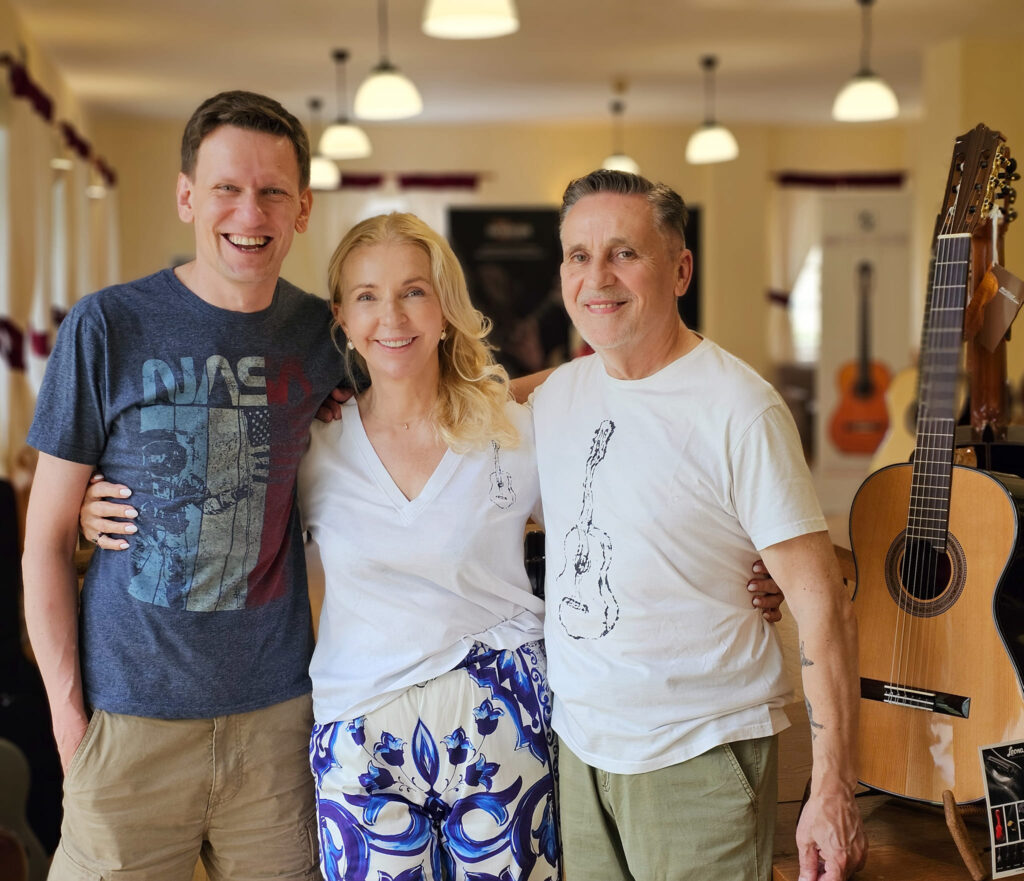
Happy to be back in Poland this summer for two major guitar workshops. I’ll be giving composition and guitar classes at:
▪️ The 24th International Summer Guitar Festival in Krzyżowa (July 12-21)
▪️The 16th Master & Student (Mistrz i uczeń) in Krzeszowice (August 25-31)
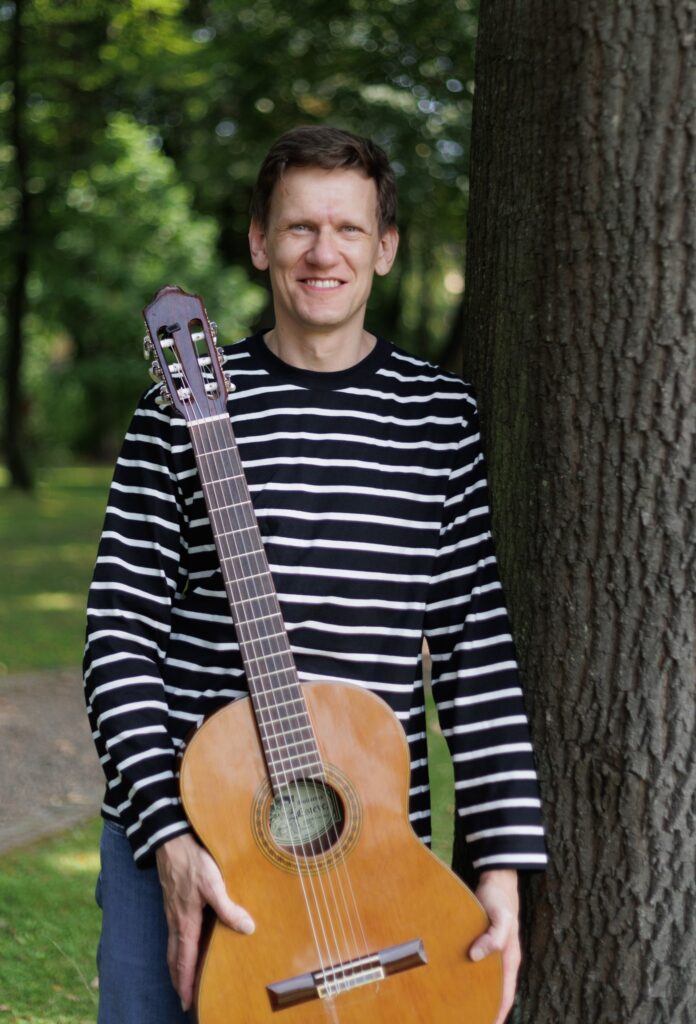
MUSIC FOR PERCUSSION & GUITAR, The Austin, TX | Session, now available on All Major Platforms!

credits:
all music composed and orchestrated by Marek Pasieczny
▪️ Marek Pasieczny: Guitar
▪️ Thomas Burritt: Vibraphone, Marimba, Glockenspiel, Thai Gongs, Tibetan Tingsha, Temple Bell & Tam-Tam.
▪️ recording engineers: Jess Griggs & Jordan Walsh
▪️ video editing & post-production: Marek Pasieczny
▪️ recorded at The University of Texas, Austin TX, USA
New album with Thomas Burritt 'MUSIC FOR GUITAR & PERCUSSION’ will be out soon! Recorded at the recording studio of The University of Texas at Austin, TX, USA
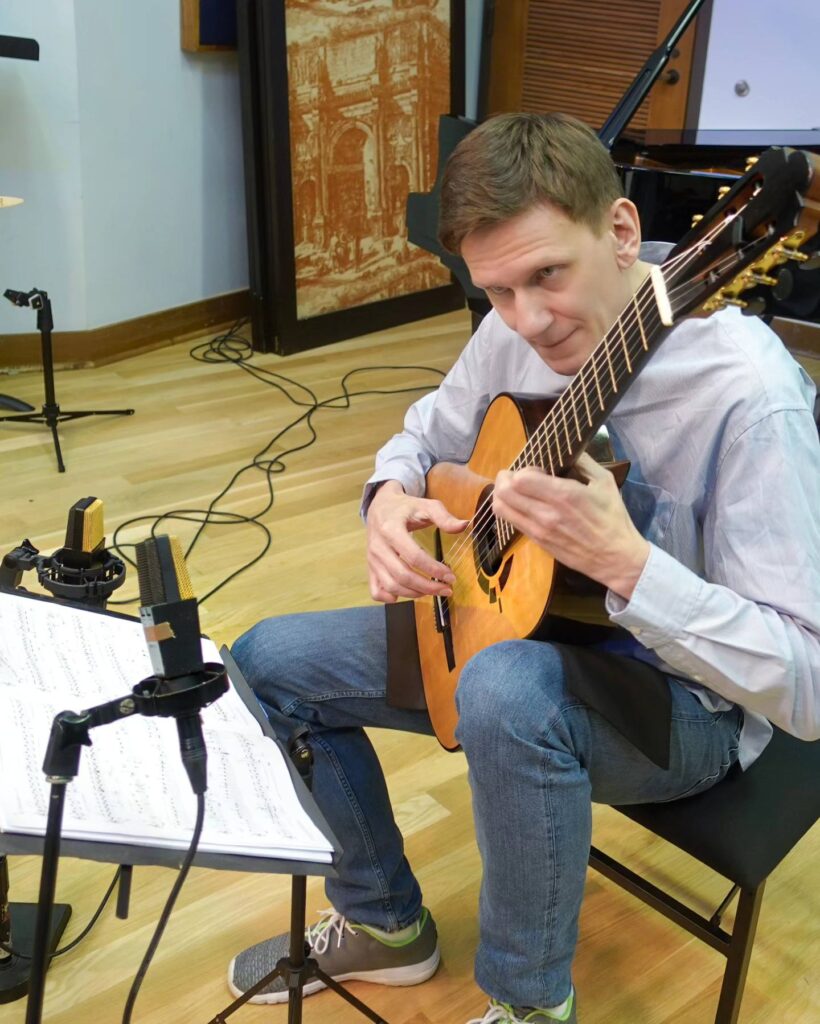
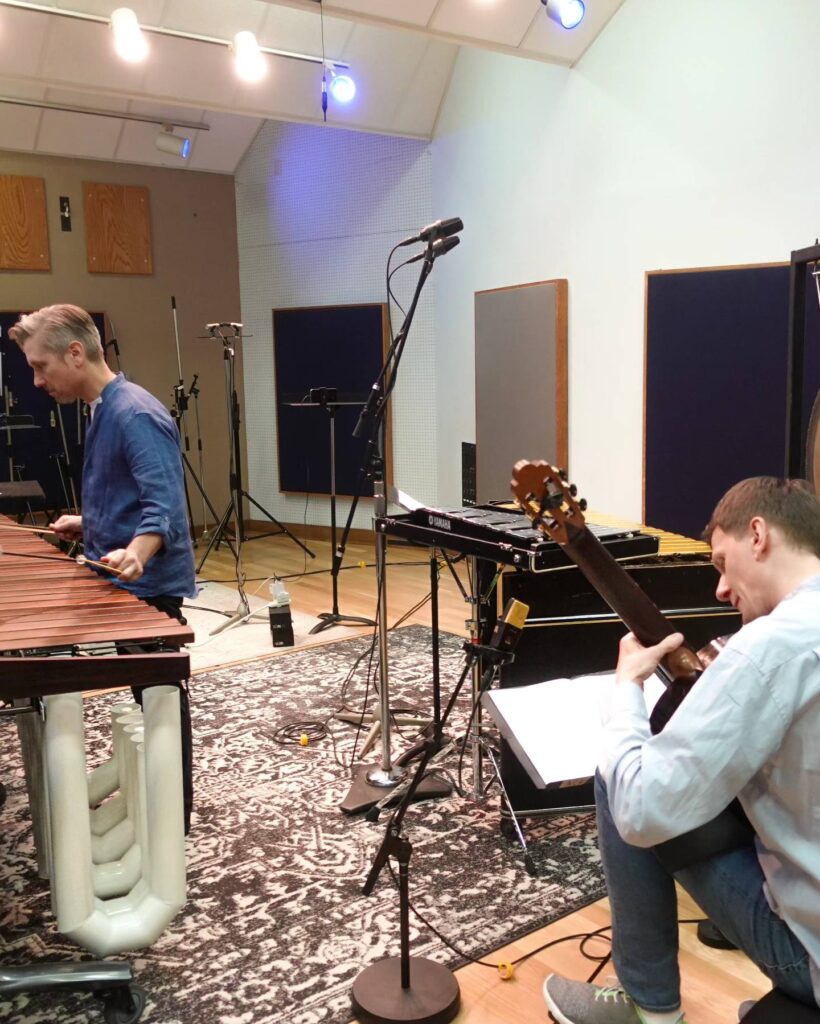
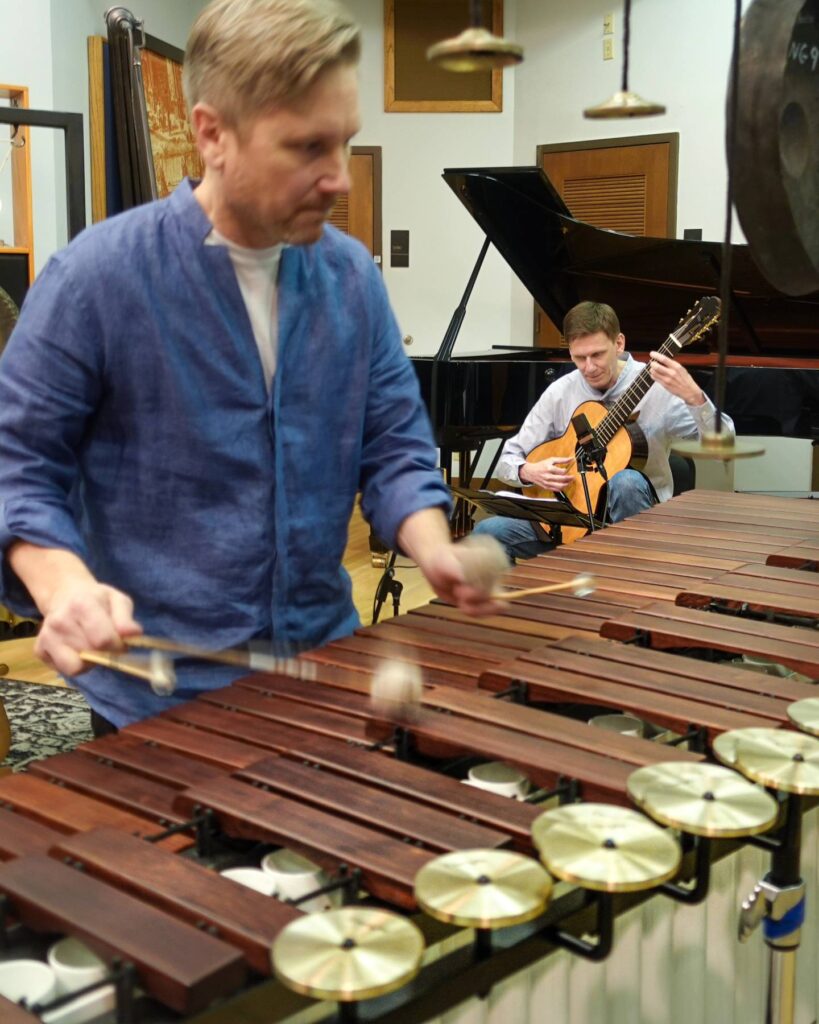
’RECURSIVE REFLECTIONS’, has been recorded by Mateusz Kowalski, Andrzej Grygier and myself.
audio recording by: Daniela Rippel-Markiewicz , Franciszek Jakubiak, and Dr. hab. Ewa Lasocka of Uniwersytet Muzyczny Fryderyka Chopina, video footage and pictures by Mikołaj Szenfeld.

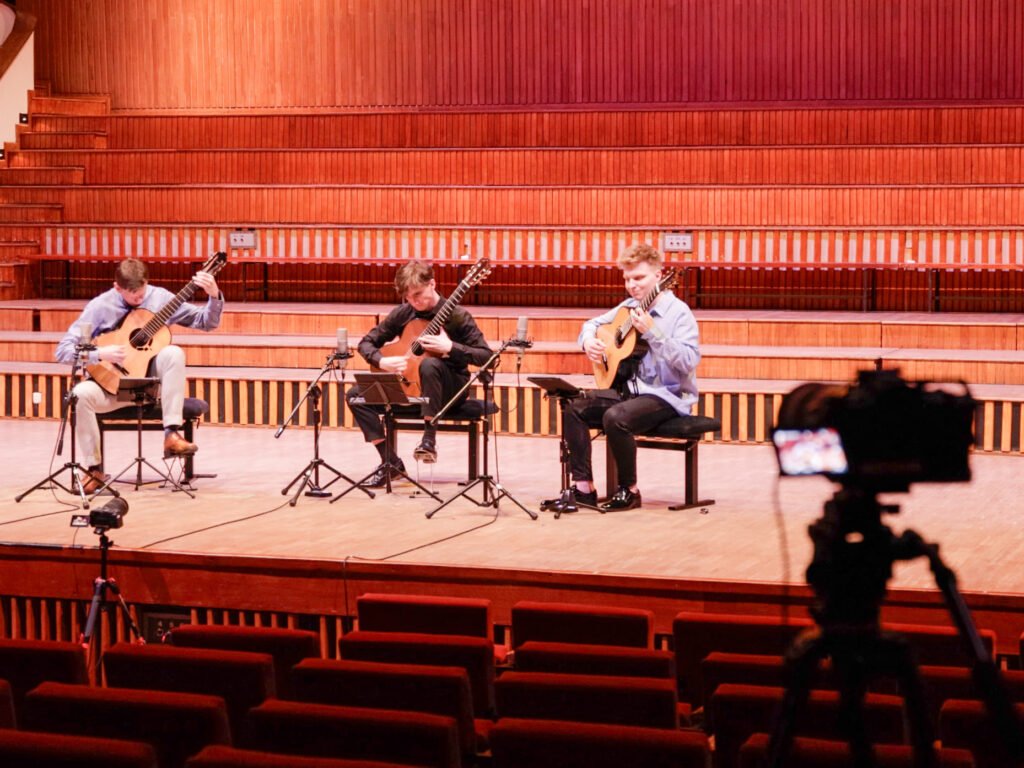

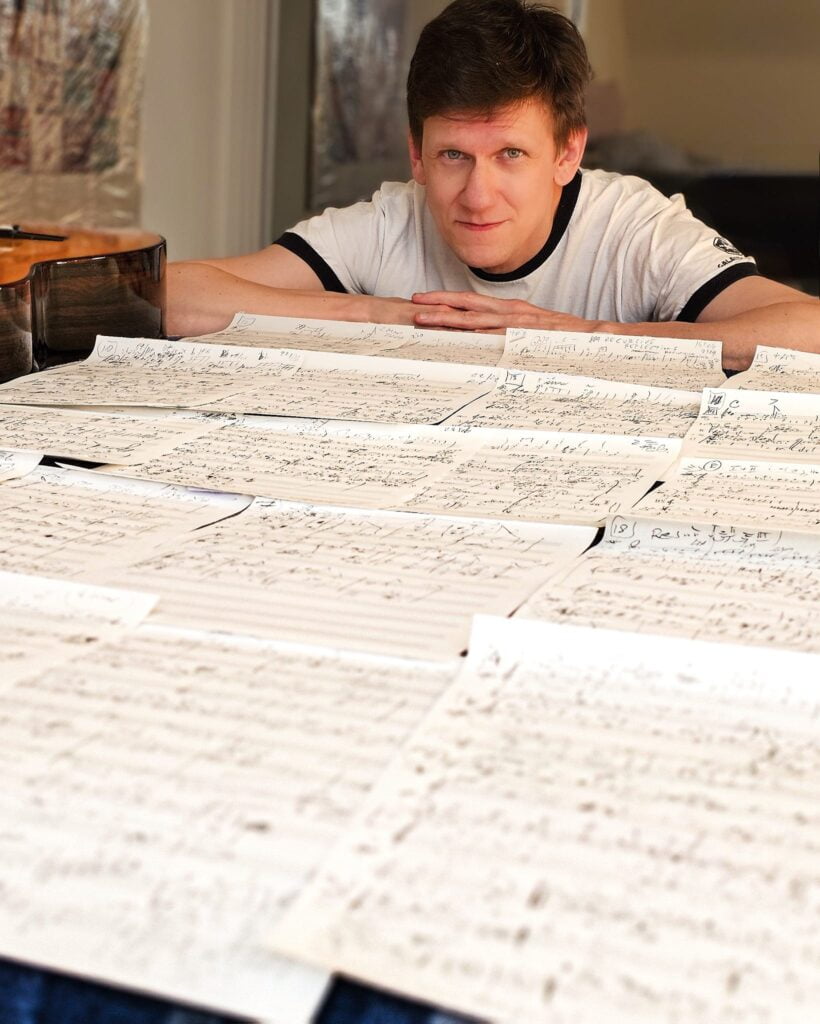
Recursive Reflections: 35 Variations with Fugue (for Guitar Trio) (2024)
The form of a guitar trio has always fascinated me, especially the sonic effects produced by three identical instruments. The balance, symmetry, and perhaps most importantly, the stereophonic and expansive sound that such instrumentation creates. The initial sketches for Recursive Reflections were made several years ago, already with the idea of a guitar trio in mind. This is one of those rare instances of a composer revisiting old sketches from the past.
Despite the undeniable sonic appeal of such an ensemble, original repertoire for guitar trio practically does not exist (compared to hundreds, or perhaps even thousands, of guitar duets and quartets).
The main inspiration for the musical architecture of Recursive Reflections came from four sets of variations, all with the same instrumentation (the piano as the composer’s instrument of interest), but entirely different in style, time of creation, and compositional material: J.S. Bach and his 30 Goldberg Variations, BWV 988; 14 variations on the theme ‘Enigma’ by Edward Elgar (in the solo piano version); 33 variations for piano, Op. 120 (on a theme by Antonio Diabelli), by Ludwig van Beethoven; and finally The 48 Variations for Two Pianos by John McGuire from 1976-1980.
It is worth noting from the outset that in this composition, I didn’t distinguish between guitar: one, two, and three, but rather divided them into central, left, and right guitar. I did this very consciously, guided within this compositional architecture by the most important factor shaping the entire trio – the aforementioned sonic aspect (stereophonic effect).
Recursive Reflections consist of 35 variations and a three-voice fugue. In Beethoven’s aforementioned variations, the 29th variation is written in the form of a fugue. In the case of Recursive Reflections, the fugue itself appears in its pure form as the penultimate part. The fugue form and the polyphony of the psalms are nods to Bach. However, the reminiscence (sketches of the theme) of the fugue appears throughout the variation form in a hidden manner (as in the case of the mysterious theme of the ’Enigma’ in Elgar’s variations). The theme appears in six scattered variations throughout the entire piece, in different modes, intensities, tonalities, and contexts. The fluidity between variations, the sonic element, post-minimalism, and ambient qualities are references to the aforementioned McGuire Variations.
The variations themselves are divided into five interwoven groups.
In terms of quantity, the first group (also the titular group) is ‘Recursive Reflection’, where the three instruments perform the same compositional material. However, this portion of the material is presented with very precisely planned delays. It’s a kind of recursive reflection (not in visual, physical, or mathematical form), but in musical form, in the form of sound.
The second group is ‘Mirror’. The central guitar serves as the compositional center (often in the form of an ostinato or an integral part). In this center, the neighboring guitars (left and right) musically reflect each other alternately, like in a mirror.
The third group is ‘Bells’. Here, all elements of the composition are subordinate to sonority – the classical effect of bells. Resonance, space, time, and the meditative character are significant in shaping the form of each variation.
The fourth group is ‘Psalm’. A short form serving as a purifying and reflective effect. Polyphonic, almost choral in its compositional material.
The fifth group is ‘Shadows’. In contrast to the previous groups, here the harmonic monolith is the entirety of the trio’s sound. None of the three parts is integral or stands out. The material of each part is different, yet each part complements and supplements its neighboring parts simultaneously.
Recursive Reflections are my personal variations on the sonority of three identical instruments, in this case, classical guitars. Despite the reminiscence of the fugue theme as an element integrating the entire form, it is not the theme but rather the stereophonic aspect that was the reason for the creation of the piece and the shaping factor.
I hope that Recursive Reflections will, at least to some extent; help rediscover the unique potential that a chamber ensemble composed of three classical guitars carries.
The piece is dedicated to my friend, the outstanding luthier and artist – Philip Woodfield.
Marek Pasieczny
(Leeds, United Kingdom, April 2024)
(in Polish)
Rekursywne Odbicia: 35 Wariacji i Fuga (na Trio Gitarowe) (2024)
Od zawsze fascynowała mnie forma tria gitarowego, zwłaszcza efekty sonorystyczne trzech takich samych instrumentów. Balans, symetria oraz, być może przede wszystkim, stereofoniczne i szerokie brzmienie, jakie daje takie instrumentarium. Pierwsze szkice do Recursive Reflections powstały kilka lat temu, już wtedy z myślą o trio gitarowym. To jeden z tych rzadkich przypadków kompozytorskiego powrotu do starych szkiców z przeszłości.
Mimo niezaprzeczalnej atrakcyjności brzmieniowej takiego składu, oryginalny repertuar na trio gitarowe praktycznie nie istnieje (w porównaniu do setek, a może nawet tysięcy duetów i kwartetów gitarowych).
Główną inspiracją muzycznej architektury Recursive Reflections były cztery formy wariacyjne, tej samej instrumentacji (fortepian jako instrument zainteresowania kompozytora), jednak zupełnie różne w stylu, czasie powstania i samym materiale kompozytorskim: J.S. Bach i jego 30 wariacji Goldbergowskich, BWV 988; 14 wariacji z tematem „Enigma” Edwarda Elgara (w wersji na fortepian solo); 33 wariacje na fortepian, Op. 120 (na temat walca Antonio Diabellego), Ludwiga van Beethovena oraz 48 wariacji na dwa fortepiany Johna McGuire’a z lat 1976-1980.
Warto na samym początku zaznaczyć, że w tej kompozycji nie rozróżniłem gitar na pierwszą, drugą i trzecią, a podzieliłem je na gitarę środkową, lewą i prawą. Zrobiłem to bardzo świadomie, kierując się w ramach tej kompozytorskiej architektury, najważniejszym czynnikiem kształtującym całe trio – przywołanym już aspektem sonorystycznym (efektem stereofonii).
Recursive Reflections składają się z 35 wariacji oraz trzygłosowej fugi. W wspomnianych wariacjach Beethovenowskich, wariacja 29-ta napisana jest właśnie w formie fugi. W przypadku Recursive Reflections, sama fuga pojawia się w czystej formie jako część przedostatnia. Forma fugi oraz polifoniczność psalmów to nawiązanie do Bacha. Jednak reminiscencja (szkice tematu) fugi pojawiają się na wskroś formy wariacyjnej w ukryty sposób (tak jak w przypadku tajemniczego tematu ‘Enigmy’ w wariacjach Elgar’a). Temat występuje w sześciu rozproszonych na przestrzeni całego utworu, wariacjach w różych trybach, o różym natężniu, w różych tonacjach oraz w różym kontekscie. Płynność pomiędzy wariacjami, element sonorystyczny, post-minimalizm i ambient to odwołanie do przywołanych Wariacji McGuire’a.
Same wariacje występują w pięciu przemieszanych ze sobą grupach.
Pod względem liczebności, pierwsza grupa (zarazem grupa tytułowa) to Recursive Reflection (rekursywne odbicie). Trzy instrumenty wykonują ten sam materiał kompozytorski. Jednak ten potrójnie zaprezentowany materiał zostaje pokazany z bardzo dokładnie zaplanowanym opóźnieniem. To swego rodzaju rekursywne odbicie (nie w formie wizualnej, fizycznej czy matematycznej ), ale w formie muzycznej, w formie dźwięku.
Druga grupa to Mirror (lustro). Gitara środkowa stanowi kompozytorskie centrum (często w formie ostinato lub integralnej partii). W owym centrum, naprzemiennie jak w lustrze: muzycznie odbijają się gitary sąsiadujące (lewa i prawa).
Grupa trzecia to Bells (dzwony). Tu wszystkie elementy kompozycji podporządkowane są sonorystyce – klasycznemu efektowi dzwonów. Wybrzmienie, przestrzeń, czas, charakter medytacji ma tu znaczenie kształtujące formę danej wariacji.
Czwarta grupa to Psalm. Krótka forma pełniąca efekt oczyszczający i refleksyjny. Polifoniczna, wręcz w swoim charakterze materiału kompozytorskiego – chóralna.
Grupa piąta, to Shadows (cienie). W opozycji do poprzednich grup. Jedyna grupa, w której harmonicznym monolitem jest całokształt brzmienia tria. Tu żadna z trzech partii nie jest integralna, czy wyróżniająca się. Materiał każdej z nich jest inny, równocześnie zarazem każda partia z osobna dopełnia i uzupełnia partie jej sąsiadujące.
Recursive Reflections to moje osobiste wariacje na temat sonorystyki trzech takich samych instrumentów, w tym przypadku gitar klasycznych. Mimo reminiscencji tematu fugi jako elementu integrującego całą formę, to nie temat, a właśnie aspekt stereofoniczny był powodem powstania utworu oraz czynnikiem jego kształtującym.
Mam nadzieję, że Recursive Reflections pomogą choć w małym stopniu odkryć na nowo unikalny potencjał, jaki niesie ze sobą zespół kameralny złożony z trzech gitar klasycznych.
Utwór dedykuję mojemu przyjacielowi, wybitnemu lutnikowi i artyście – Philipowi Woodfieldowi.
Marek Pasieczny
(Leeds,Wielka Brytania, kwiecień, 2024)
RECURSIVE REFLECTIONS: 35 Variations with Fugue, for a Guitar Trio, has been world-premiered during The 2nd Warsaw Guitar Conference at the Auditorium Maximum, Warsaw University (in collaboration with UMFC Fryderyk Chopin University). This over 50-minute-long composition was premiered by Marek Pasieczny, Mateusz Kowalski and Andrzej Grygier




Marek Pasieczny has been featured on the latest cover of the April-June edition of ’SZESC STRUN SWIATA’ the Polish Classical Guitar Magazine.
The in-depth interview was conducted by the great researcher Wojciech Gurgul. We discussed topics such as:
➡ The compositional process, writing for baritone guitar, over 20 percussion instruments, 80 guitars and piano solo album
➡ My artist residency with ACG (Austin, TX)
➡ Latest collaborations with amazing musicians and luthiers including: Bion Tsang, Thomas Burritt, Joe Williams, Carl Petersson, Mateusz Kowalski, Bartlomiej Wezner, Philip Woodfield, Oliver Moore, and many more.
➡ New upcoming albums and videos for solo piano, guitar and percussion, guitar and piano, and also the latest guitar trio project.
➡ The magazine includes the Full Score of my piece UNTITLED (Black & Blood Orange) thanks to the generosity of Tomasz Polak.
The magazine will be available starting tomorrow (2nd of April) at chain store EMPIK.
Photo by Grzegorz Pulit
Just completed one of the biggest and most complex chamber music pieces I’ve ever done. It spans over 50 pages of hand-written sketches. The piece is in the form of variations and has been written for a Guitar Trio. It contains 35 (!) variations followed by a three-voice, full-size Fugue.

EX NIHILO (NIHIL FIT) 2: The Warsaw Session w/ Mateusz Kowalski, Ryszard Bałauszko (conductor) and The UMFC Guitar Orchestra is Out Now on All major platforms!
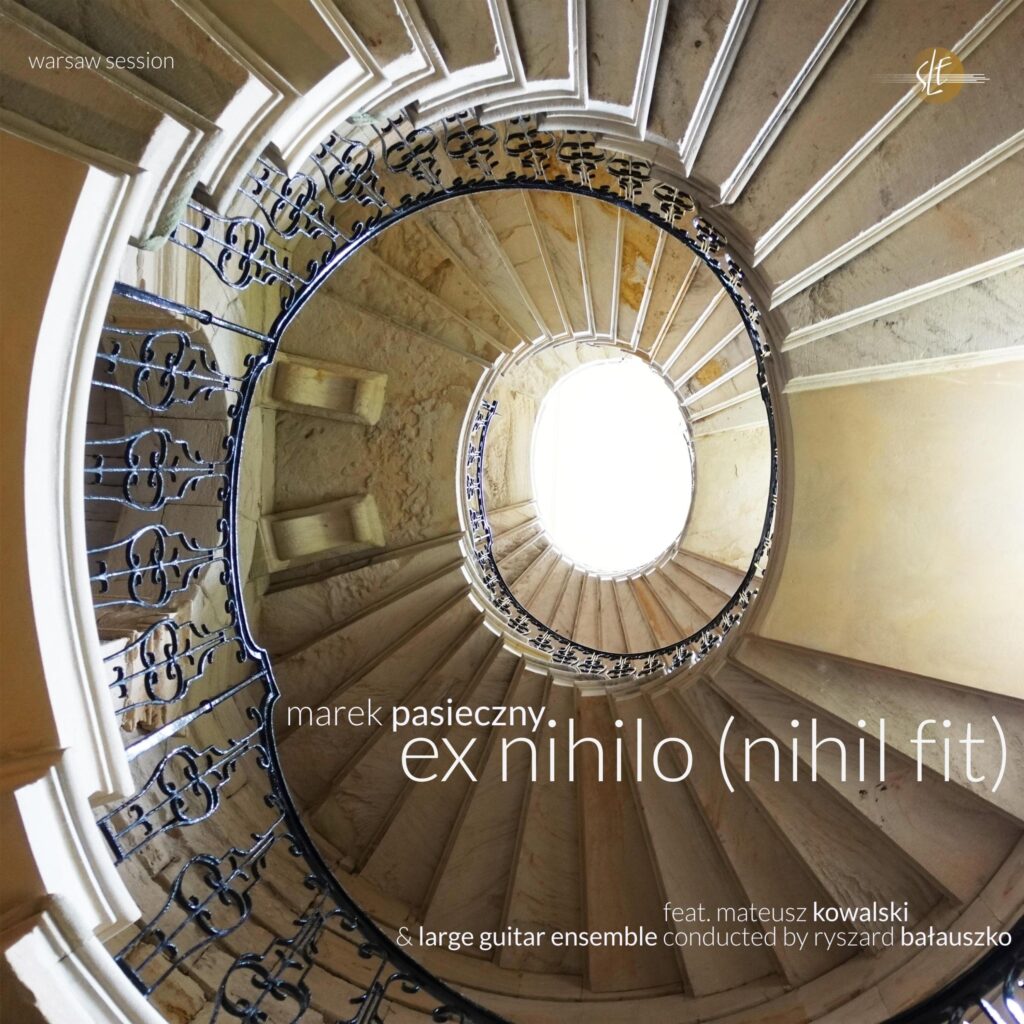
Entire recording session of Carols (Reimagined) now on YouTube!
Five traditional polish carols newly arranged and re-harmonised has been recorded on baritone guitar in 'Half Nashville Tuning’ by Oliver Moore and Philip Woodfield
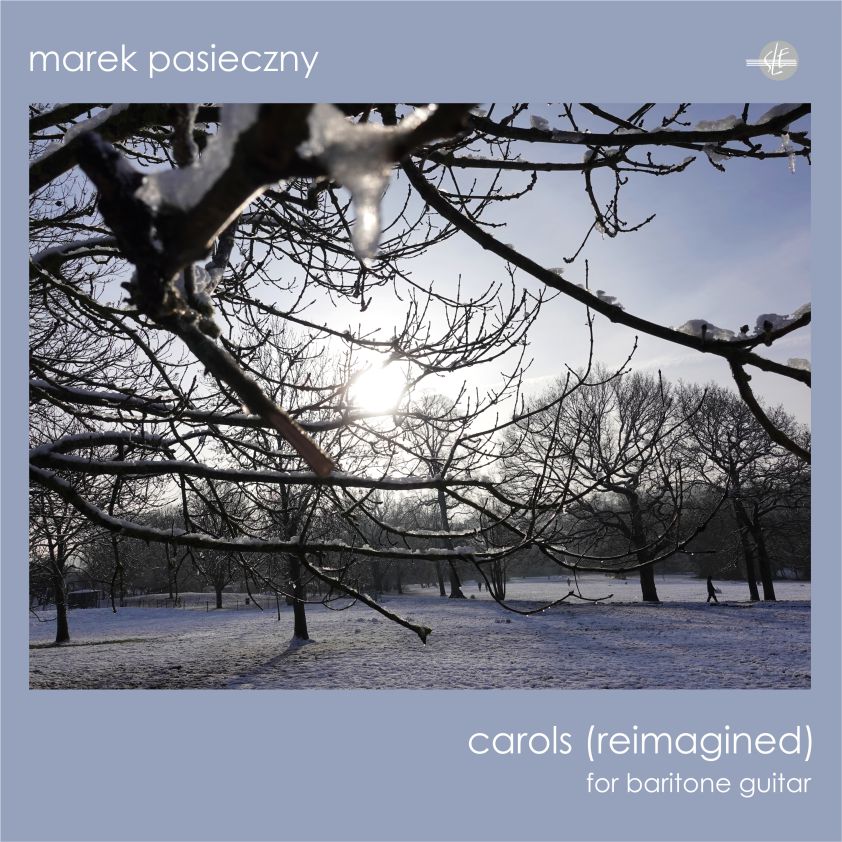
my 'EX NIHILO (NIHIL FIT) IV and 'LA CASE DONDE VIVE MIEDO, for Piano & Guitar w/ brilliant Bartłomiej Wezner has been premiered during The VI Festiwal Muzyka w Willi Blumwego, Bydgoszcz, Poland
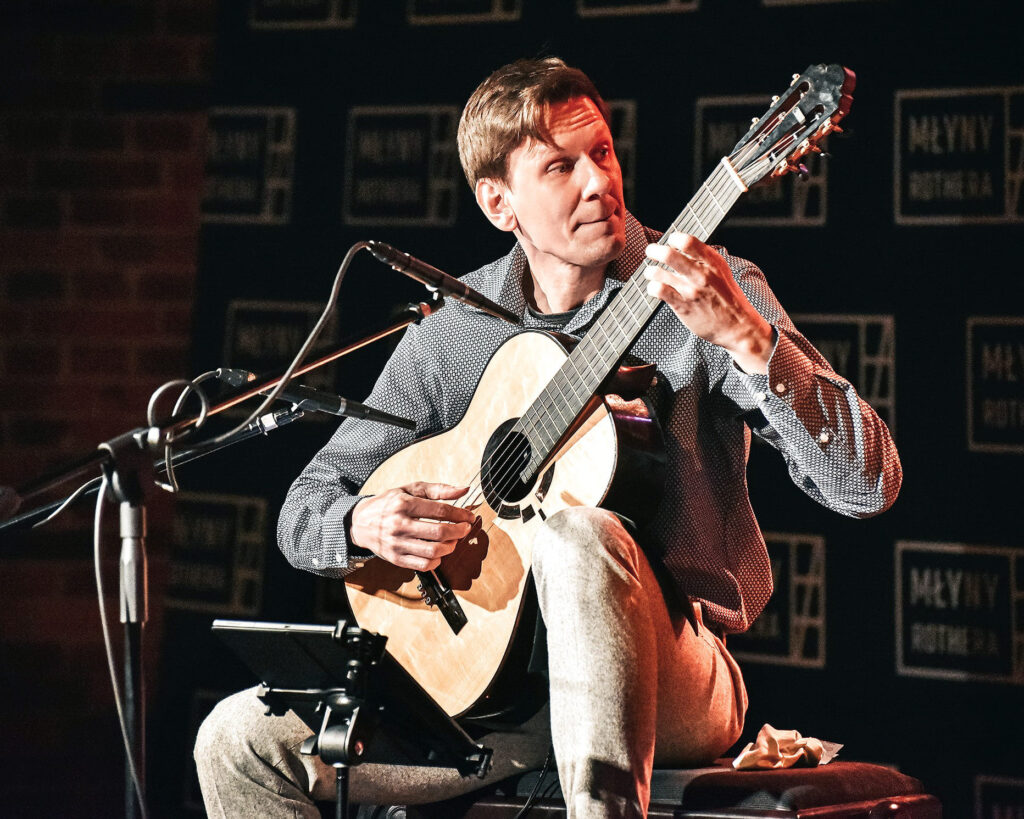
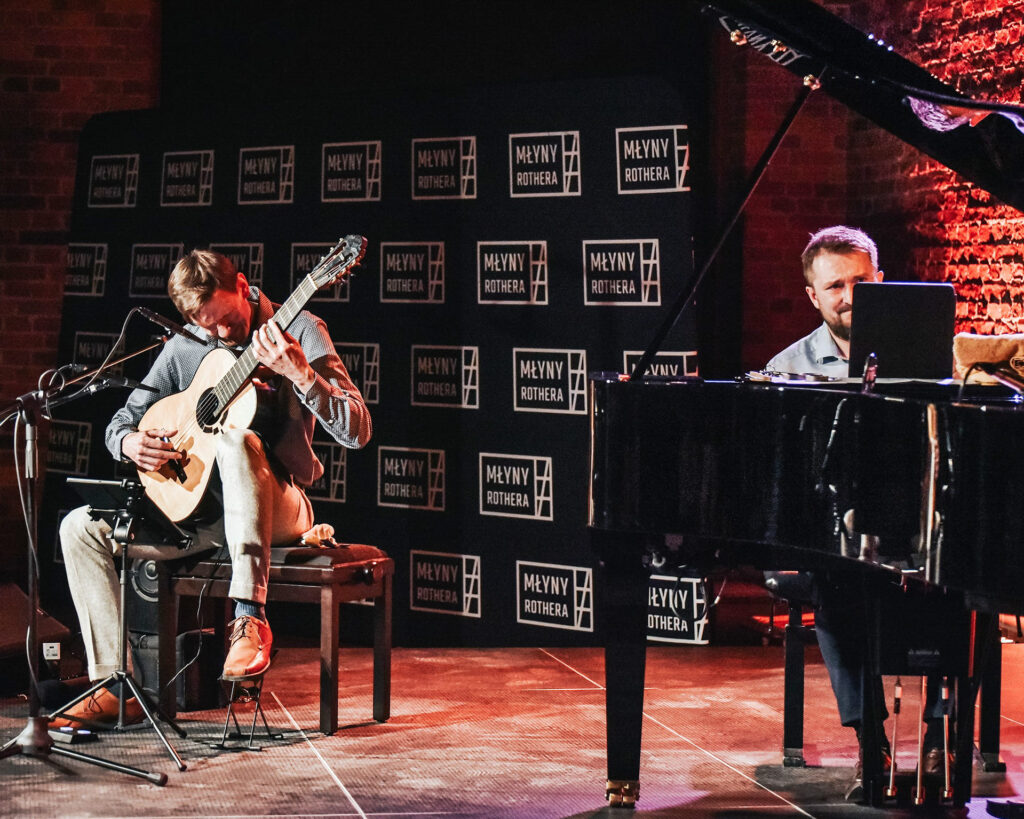
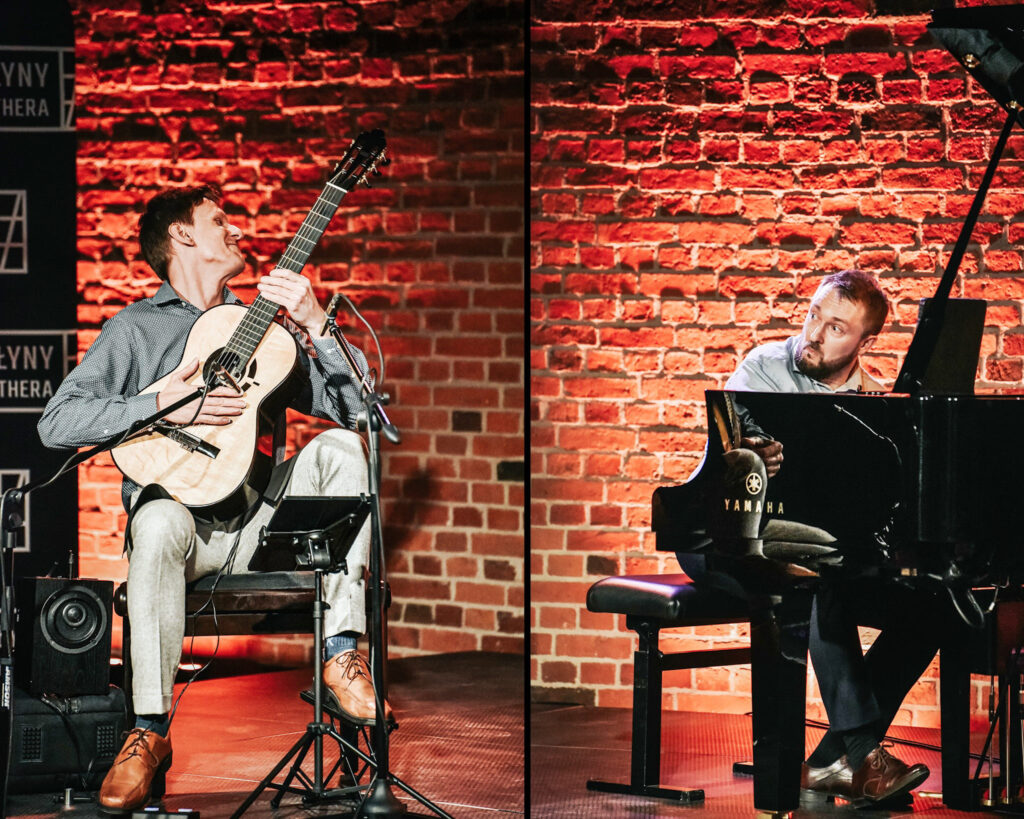
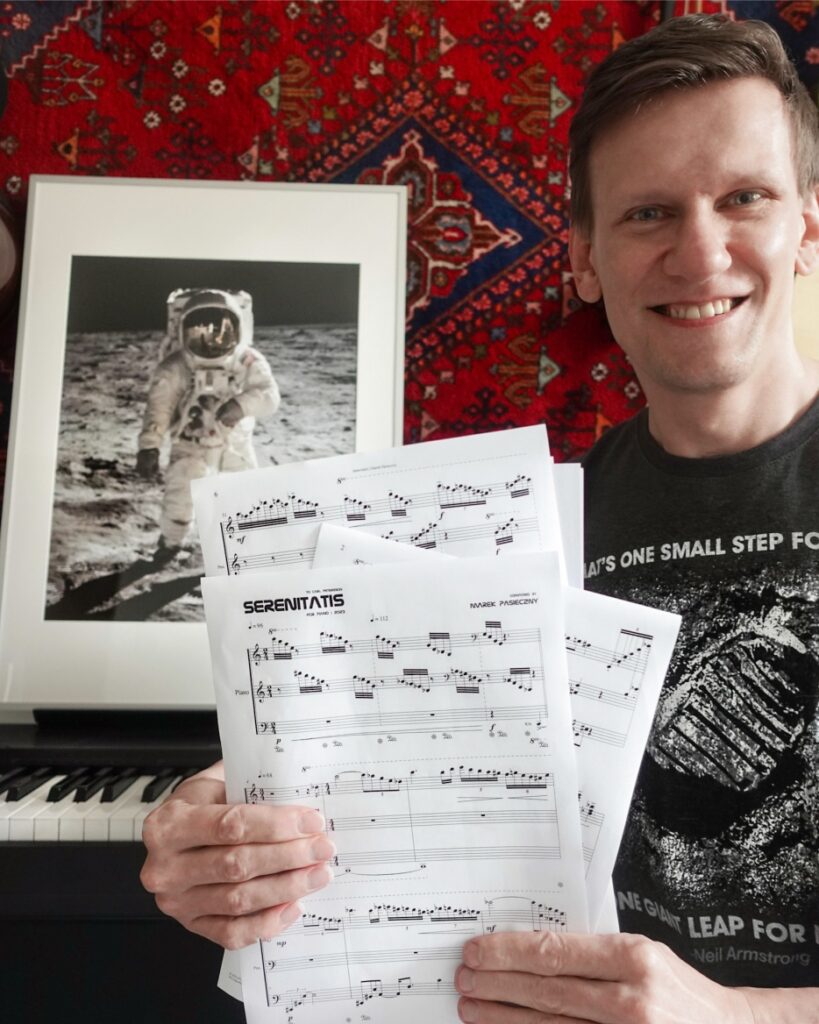
to order copy of the score / e-mail: slepayment@gmail.com
Serenitatis (for Piano solo)
From my earliest recollections, the cosmos has held an enduring fascination for me, particularly the American spaceflights of the Apollo program, culminating in the historic moon landing. In January ’23 I fulfilled my lifelong dream: visiting NASA’s Space Center in Houston.
One of the attractions at Space Center Houston is the Lunar Sample Laboratory Facility and Lunar Samples Vault. This facility hosts the largest display of Moon rocks on public view in the world. One of the incredible experiences is undoubtedly touching a fragment of the moon. Only eight lunar rocks are available for the general public to touch worldwide. The particular one I touched in Houston was brought back to Earth by the Apollo 17 crew in December 1972 and is 3.8 billion years old. Astronauts Schmitt and Cernan collected the sample in the Valley of Taurus-Littrow, located on the edge of the Sea of Serenity (Mare Serenitatis) in the upper right quadrant of the Moon as viewed from Earth.
A few months after returning to the UK, my friend Carl Petersson—an outstanding Swedish pianist currently living in Canada—reached out to me with a request to compose a solo piano piece for a rather unconventional album. The recording project would feature piano pieces inspired by the moon. My visit to Space Center Houston and the inspiration drawn from the place will be translated onto the musical score.
The primary inspiration shaping Serenitatis for me was the idea of depicting the moon’s gravity (1.62 m/s²) in a musical manner. I decided to create something resembling fluid or moving harmony (the vertical texture of the piece) and embellish it with a continuous rising and falling motion (the horizontal texture of the piece), often-in opposing directions.
The harmony of Serenitatis constantly migrates. Sometimes very imperceptibly (already in the theme presentation with half-tones), and sometimes very radically (the cascading opening arpeggios, arpeggio ranges closing the composition, and the transformation of the composition itself). To capture the atmosphere of the night, but above all the vast shades of grey, silver, and finally black (which the moon reminds me of), I decided to construct nearly 80% of Serenitatis’ harmony from pure minor chords that constantly clash and complement each other.
Serenitatis is also a distant reminiscence of the form of nocturne – music of the night. An echo of the typical theme texture (melody) that appears especially in the nocturnes of Frédéric Chopin. Hence, the main theme of Serenitatis has a very chromatic, fleeting, and lyrical character. The theme itself gravitationally changes—each successive presentation (increasingly fuller) drifts in half-tones.
Gravity is also reflected in the rhythm. Based on initial static triplets (the left-hand texture recurring as a 'nocturnal’ accompaniment in the left hand), the main theme and its development seem to continually appear in an open (rhythmically and harmonically), almost ethereal character.
Despite the nocturnal character of the theme itself, Serenitatis is a virtuosic, lively, and energetic piece. It starts from the highest register of the piano but also concludes with a tremendous ascent from the lowest to the highest possible piano notes.
I hope that Serenitatis will take you and future performers on a short journey to the moon. The piece was commissioned and is dedicated to Carl Petersson.
Marek Pasieczny
Leeds, UK, November, 2023
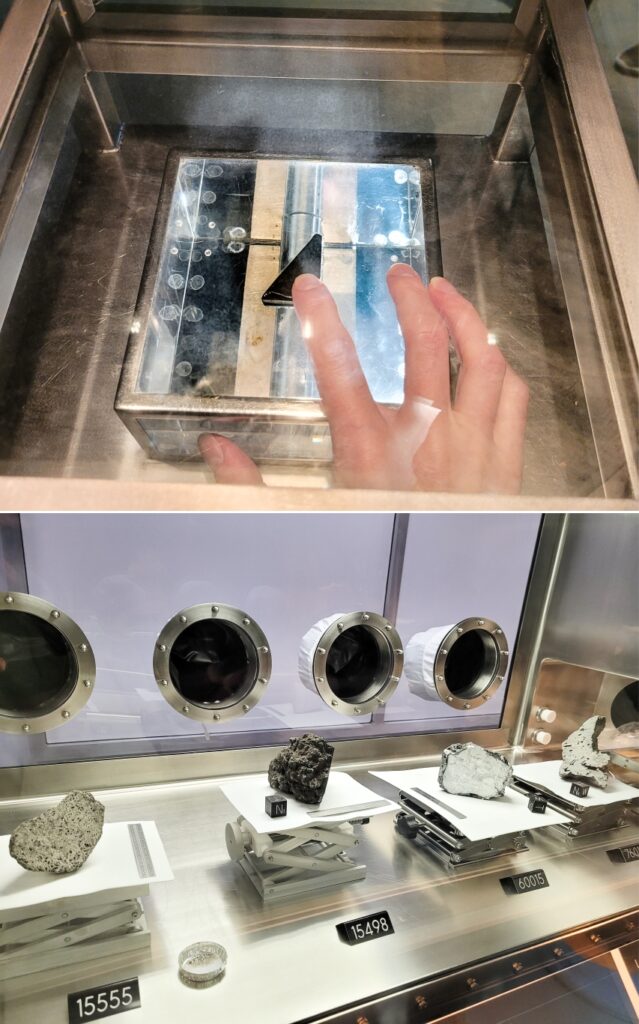
Marek Pasieczny’s solo recital at the 14th Festival International de Guitare de Versoix, Switzerland.
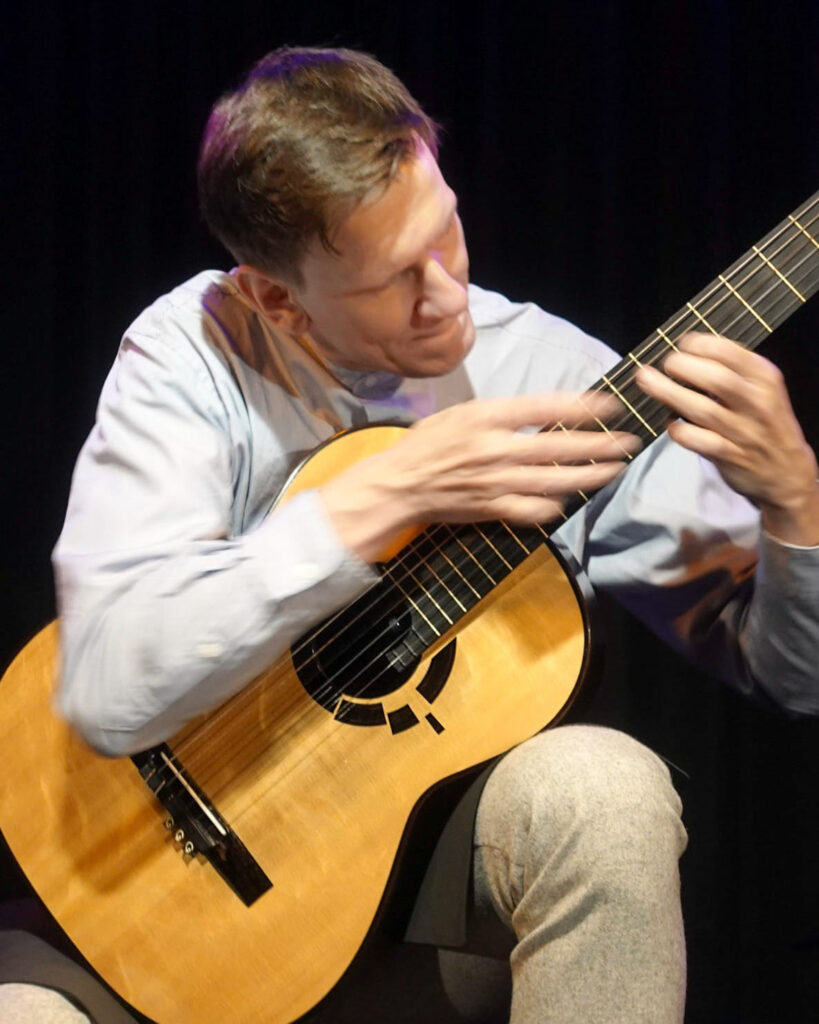
Solo Recital during the 14th „Festival International de Guitare de Versoix”, Geneva, Switzerland.
The recital will take place on the 4th of November, at 8 pm in the hall Caves de Versoix.
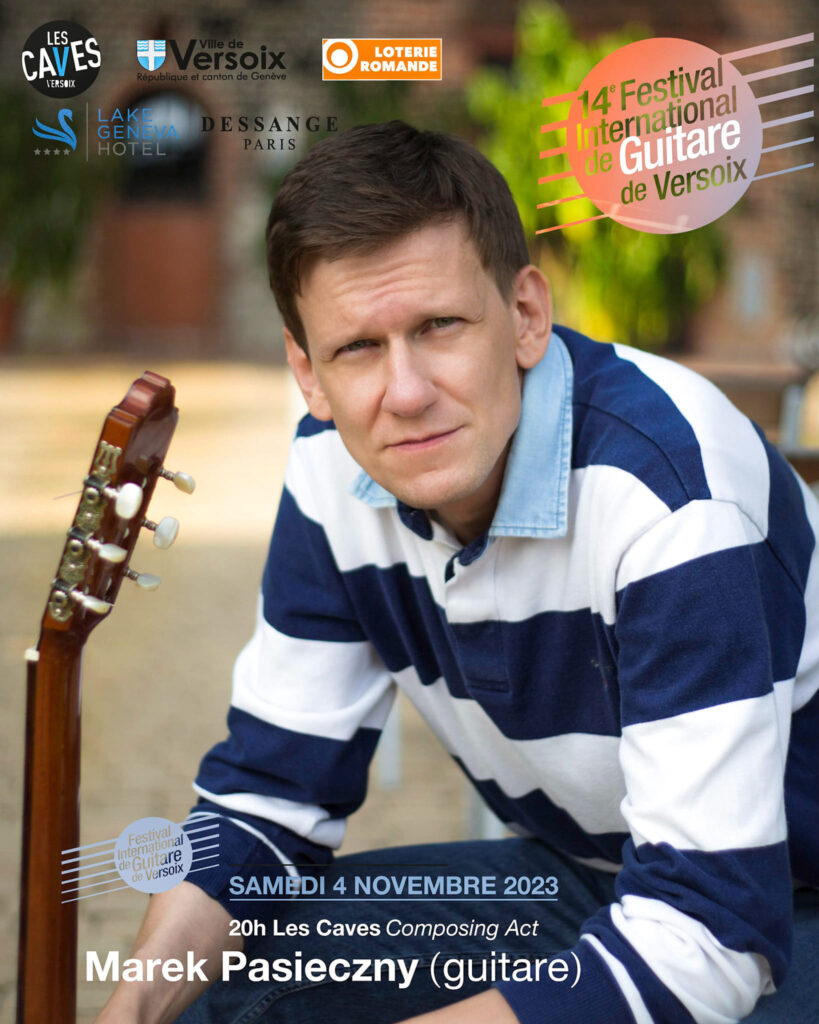
and other platforms such iTunes, Dezeer, Bandcamp, Tidal, Amazon Music and many more
◾ GENESIS This composition was commissioned by and dedicated to ACG (Austin Classical Guitar, for which I was appointed Artist in Residence for the year 2022-23. I was asked to create a piece that largely reflects the theme of ACG’s 2022-23 artistic year, which was 'HOME.’ I also knew that this composition had to be written for five separate groups of guitarists. Each group could independently prepare their assigned portion of the larger whole, but, more importantly, they were to perform that section and treat it as a finished and stand-alone piece.
These two factors (’HOME’ and the five independent guitar groups) directed my inspiration towards the philosophy of go-dai, which I had used previously when composing the 'Go-Dai Concerto’ for guitar and orchestra in 2012.
◾ 'GO-DAI’
The philosophy of Go-Dai is a Japanese concept of five elements known as godai, or the „five great”: air/wind (Japanese: 風, fū or kaze), fire (Japanese: 火, ka or hi), water (Japanese: 水, sui or mizu), earth (Japanese: 地, chi or tsuchi), and void/sky (Japanese: 空, kū or sora).
◾ 'HOME’
For me, „HOME” broadly refers to our planet as our shared home, regardless of where we live. Therefore, my initial intention was to reference weather conditions through the elements of the Go-Dai philosophy.
◾ ELEMENTS
The first step in the composition process was to develop the main themes for each of the five Go-Dai elements. Each of these themes, along with their harmonization, development, and adaptation to specific guitar groups, was shaped by the character of each element. This way, the music not only conveyed the essence of each element but also visually and suggestively impacted the listener. The choice of expressive techniques, compositional solutions, and structural elements such as meter, harmony, rhythm, tempo, and structure were closely tied to each of the five elements during the composition process.
◾ FORM / ORCHESTRATION
Despite there being five independent compositions (elements), I strongly wanted to avoid a suite-like form with clear and distinct parts. My goal was to integrate all five elements while maintaining their individualism, much like in nature. During the creation of THE ELEMENTS, I was given the choice to write a solo part for the guitar. This inspired me to consider additional solo parts on various instruments. First, I chose the cello as an instrument that blended well with the guitar’s sound. The second addition was a solo part for a percussionist who was to handle over twenty percussion instruments, which I felt naturally relates to the fundamental elements of nature.
The piece begins with abstract, low, and primal sounds symbolizing darkness. Within the structure of the triple concerto, THE ELEMENTS features three main solo cadenzas: solo (timpani), duet (guitar and cello), and trio – fugue (guitar, cello, and marimba). The entire composition is interspersed with abstract moments that serve as links between the various elements. These abstract segments contrast with meticulously developed motifs for each of the elements.
The composition concludes with a bright, cheerful finale, symbolizing transformation: from emptiness and darkness to brightness, fullness, and hope.
Marek Pasieczny (Leeds, UK 13 Oct. 2023)
Brand new version of my SIX FOLK MELODIES : suite for Clarinet in B flat & Guitar, based on Polish folk melodies, has just been premiered by phenomenal duo: Vojin Kocic (guitar) & Matthias Müller (clarinet).
Premiere took place last Sunday during the 87th Musikwoche Braunwald in Braunwald, Switzerland.
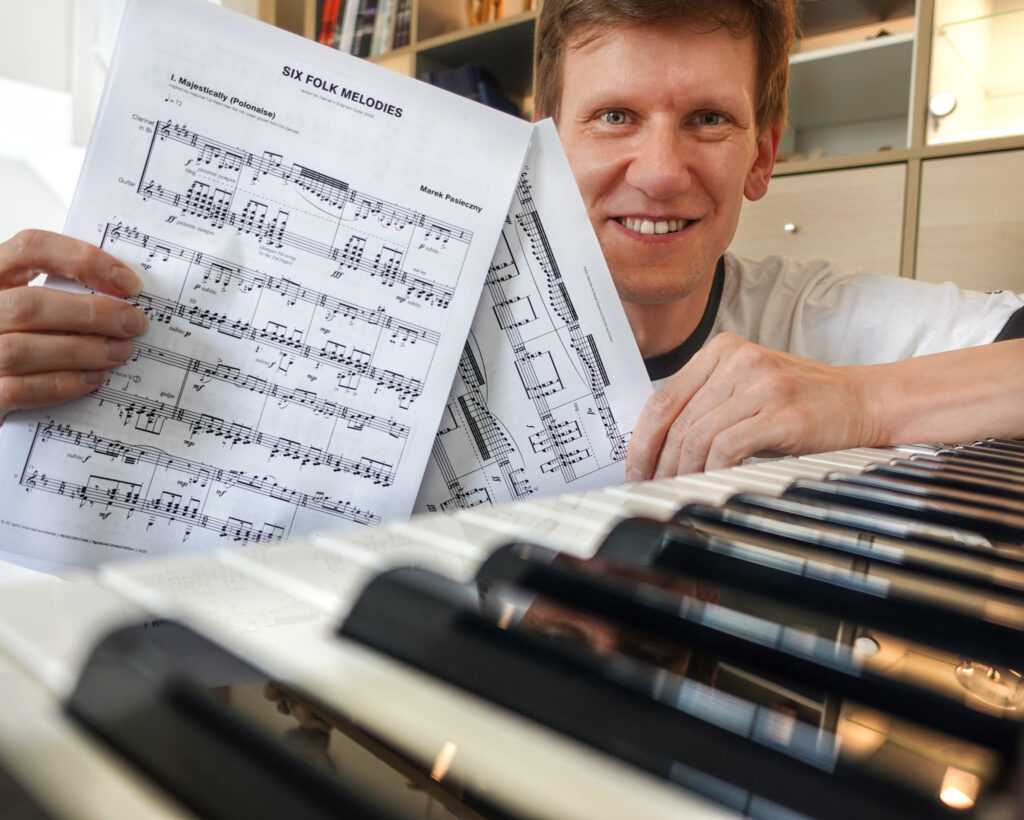
Fantastic acoustic – baritone guitar, a true work of art, one of a kind instrument made by one of the best guitar makers: Philip Woodfield and his son, Oliver.
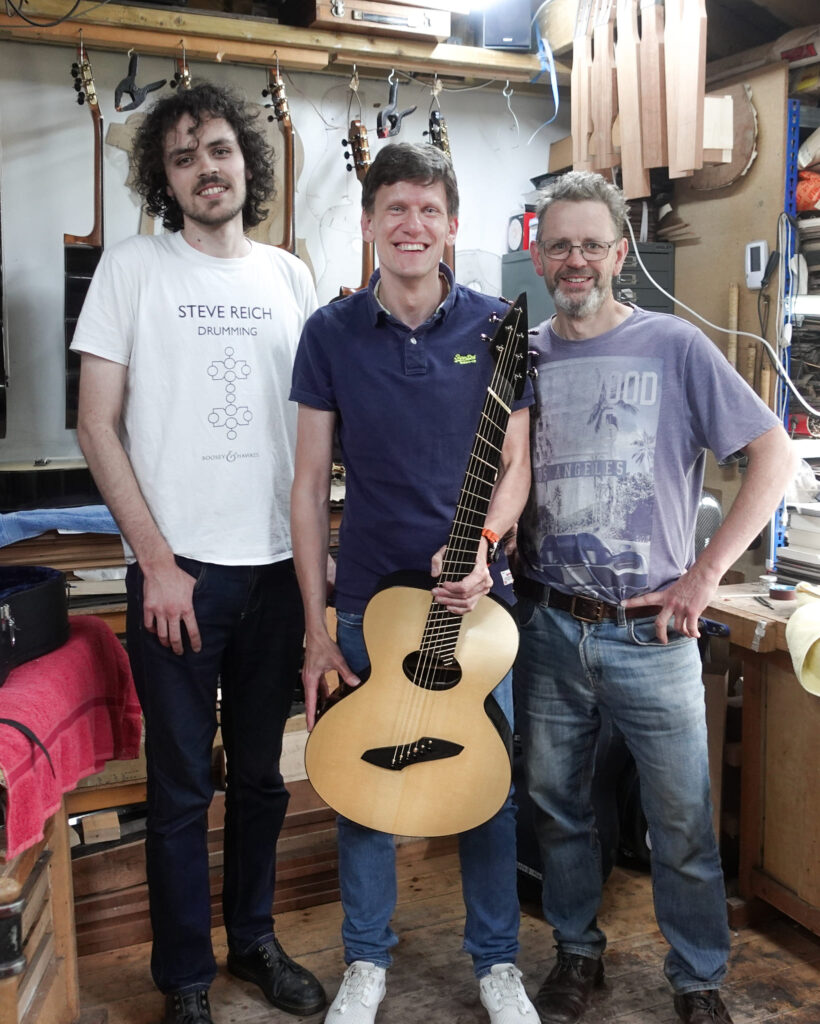
Had pleasure of giving over 50 lessons during this year’s ’Master & Student’

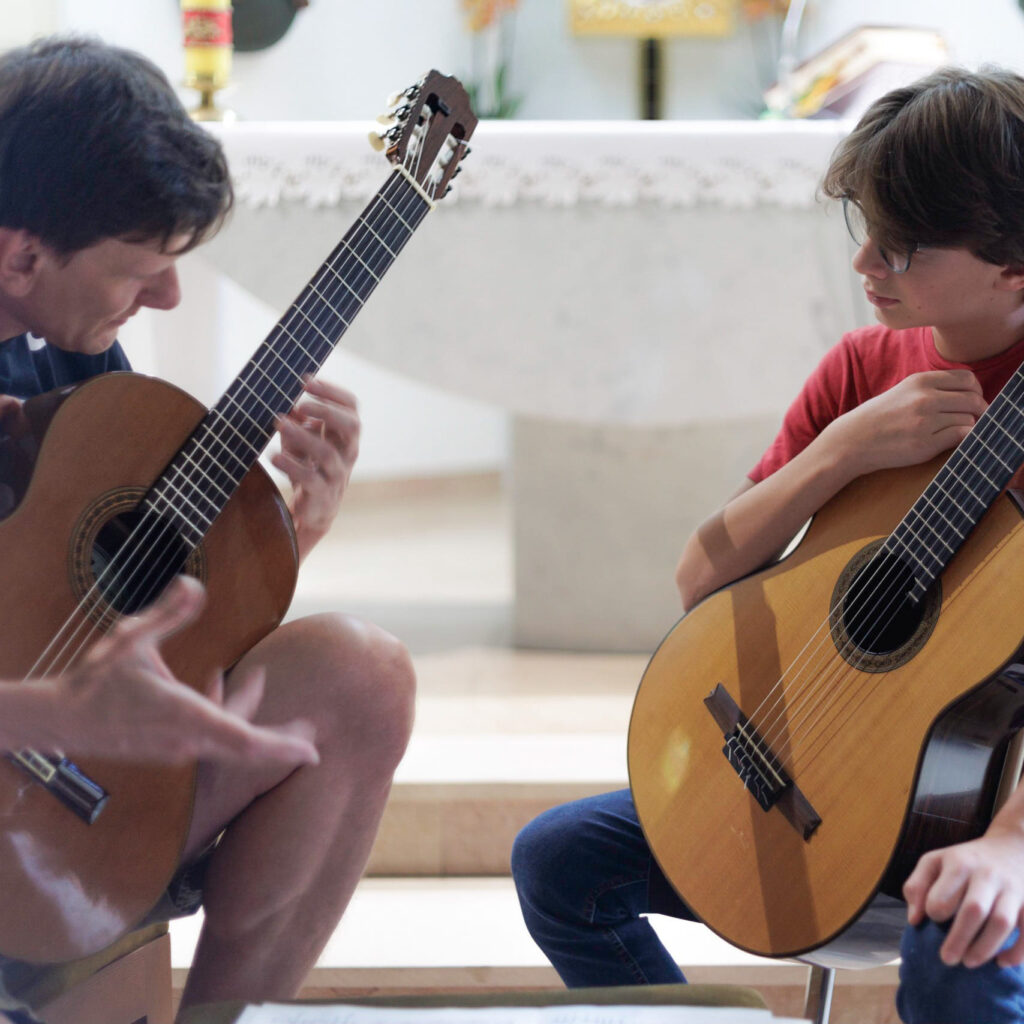
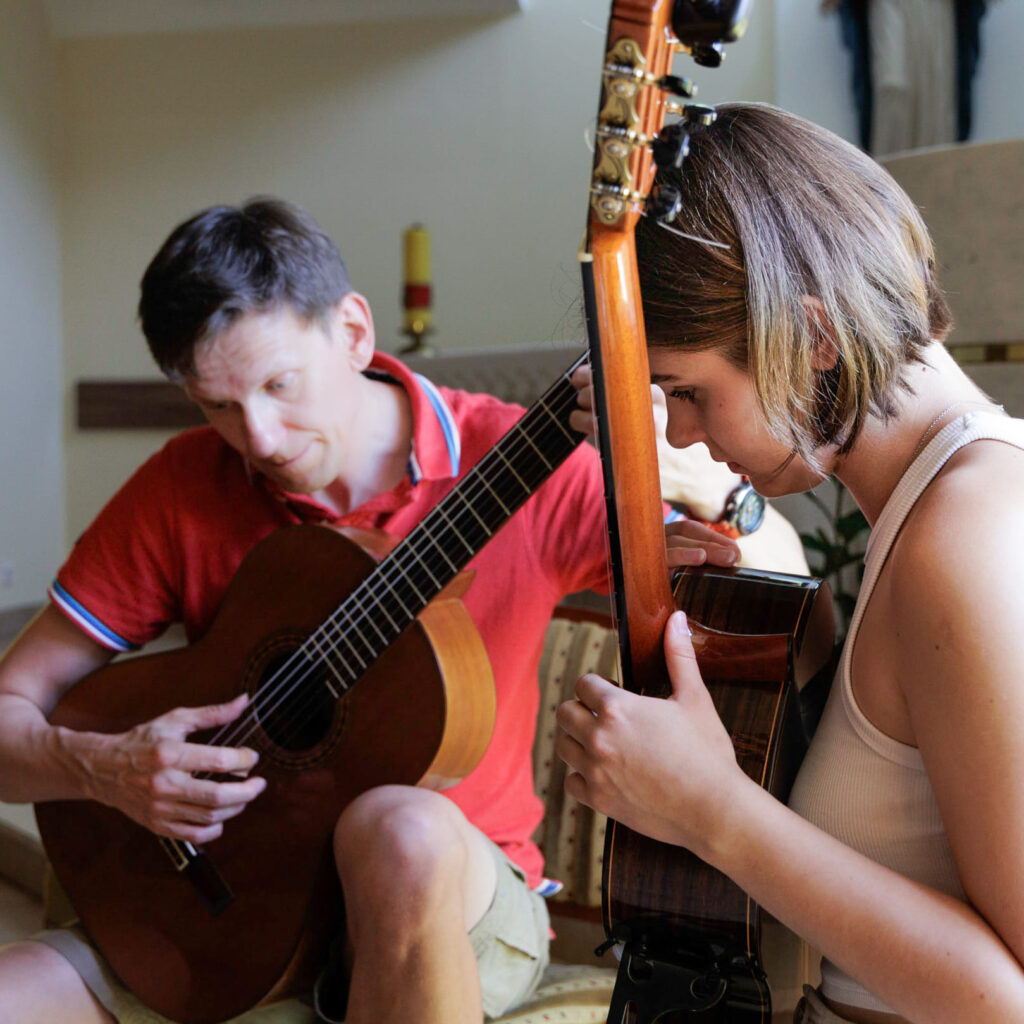
Very intensive week during this year’s Summer Guitar Festival in Krzyżowa.
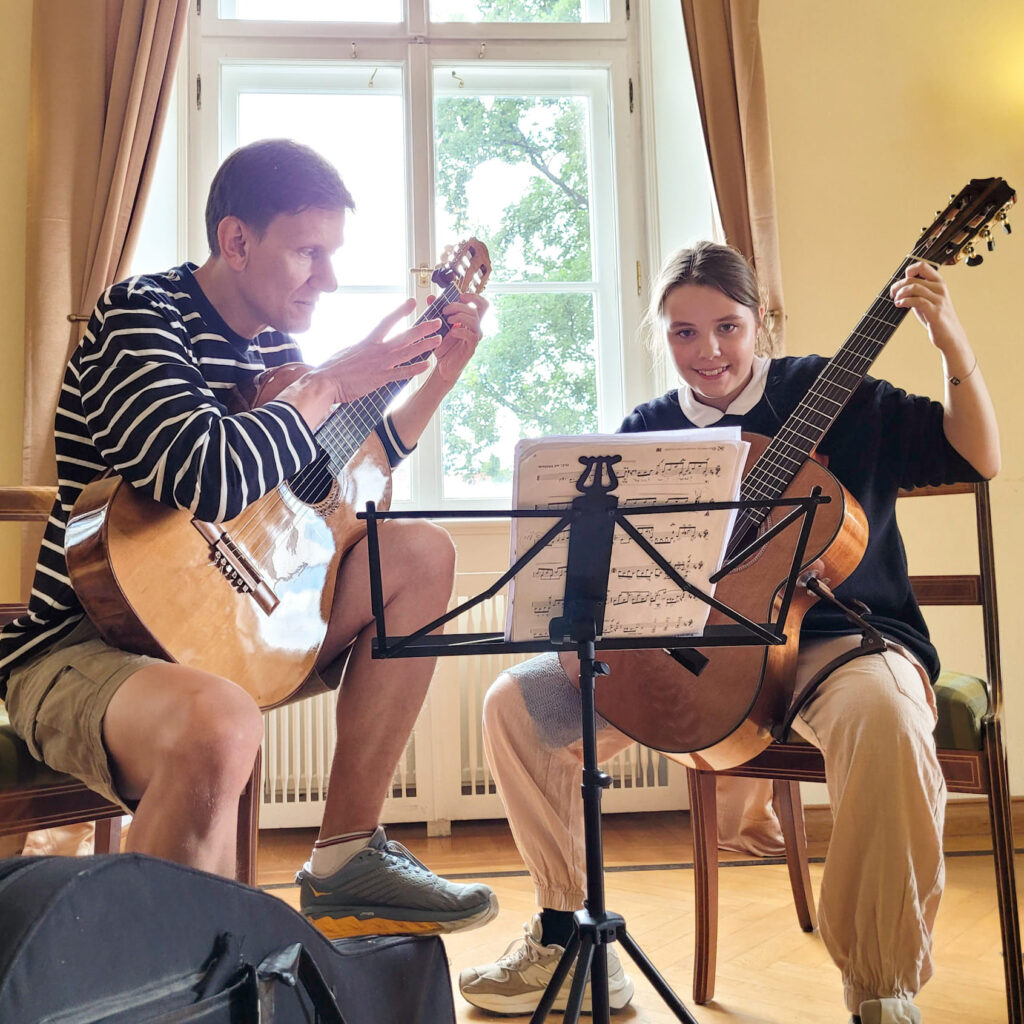
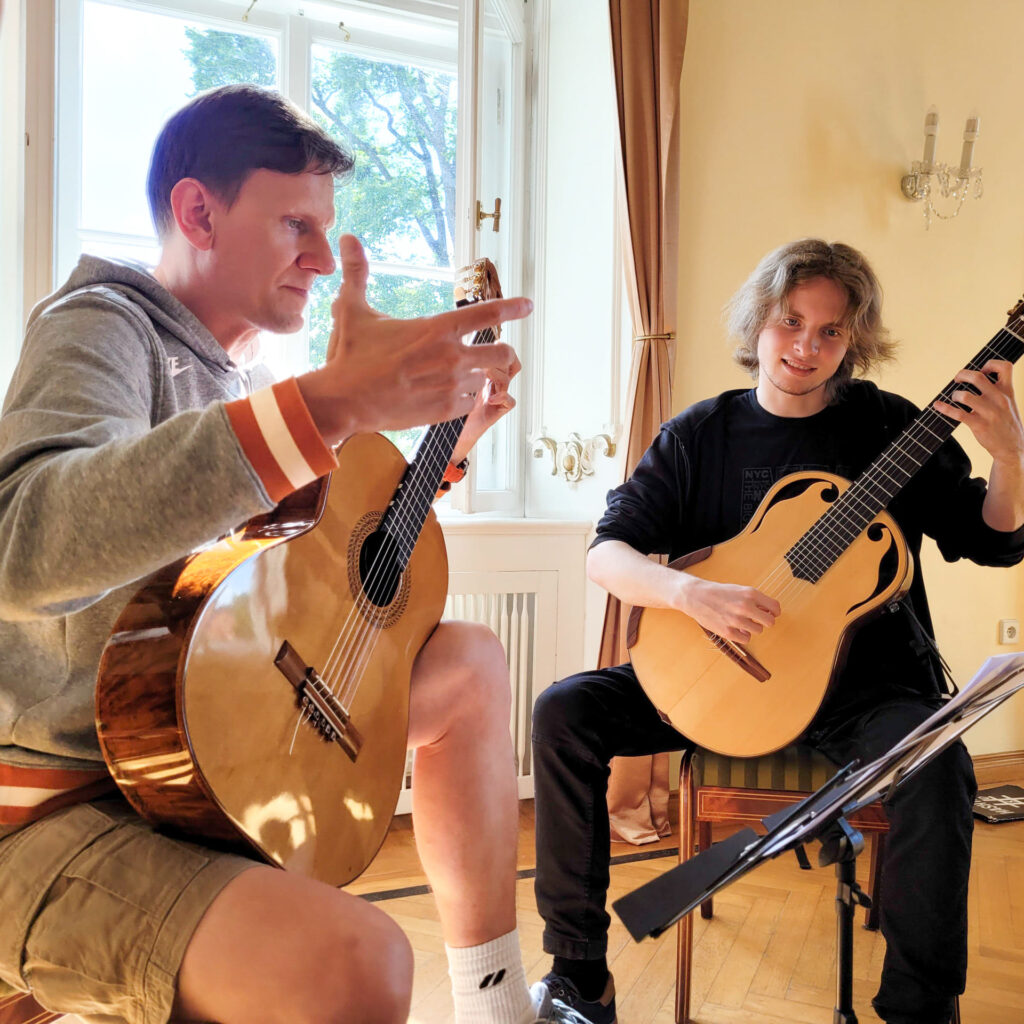
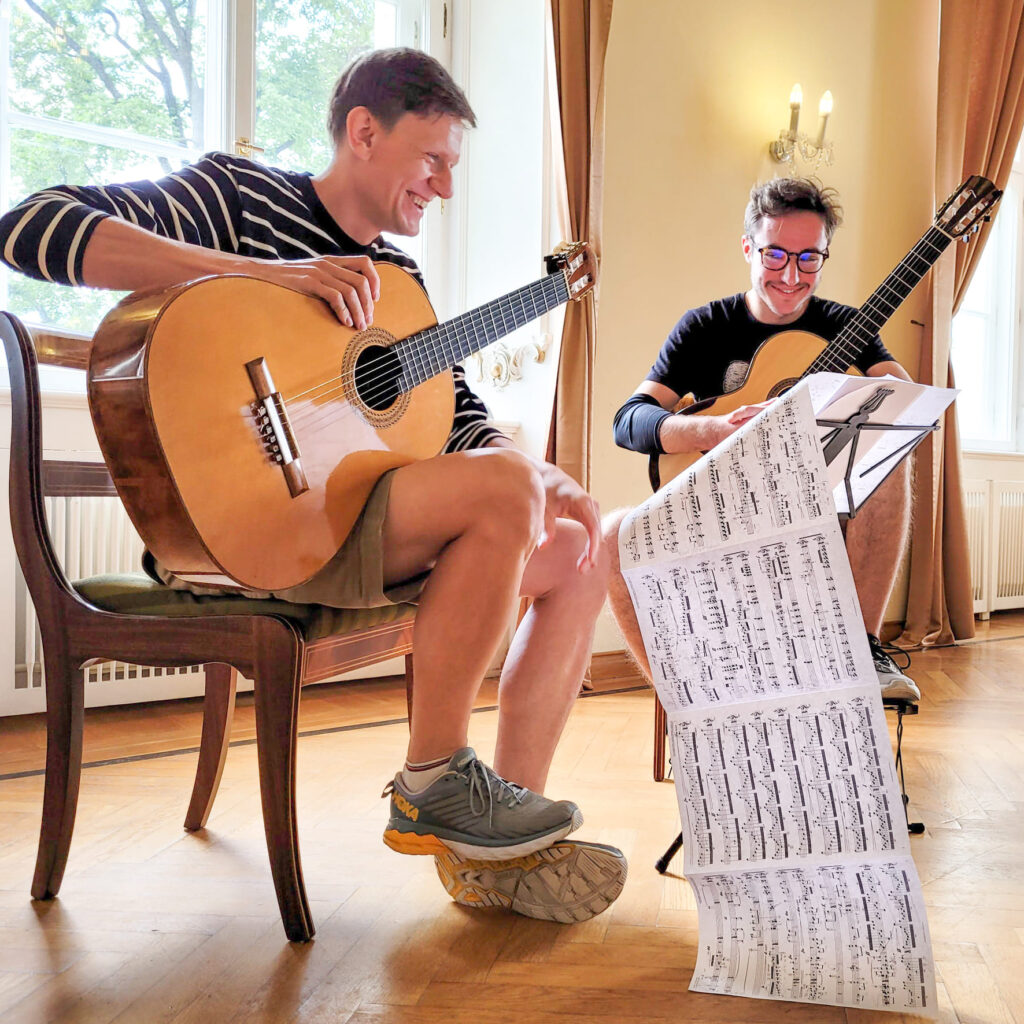
Czech première of Ex Nihilo (Nihil Fit) II during the 35th of Guitar Festival Mikulov w/ Thomas Offermann, Pia Gazarek-Offermann and amazing guitarists from Hochschule für Musik und Theater Rostock, Germany
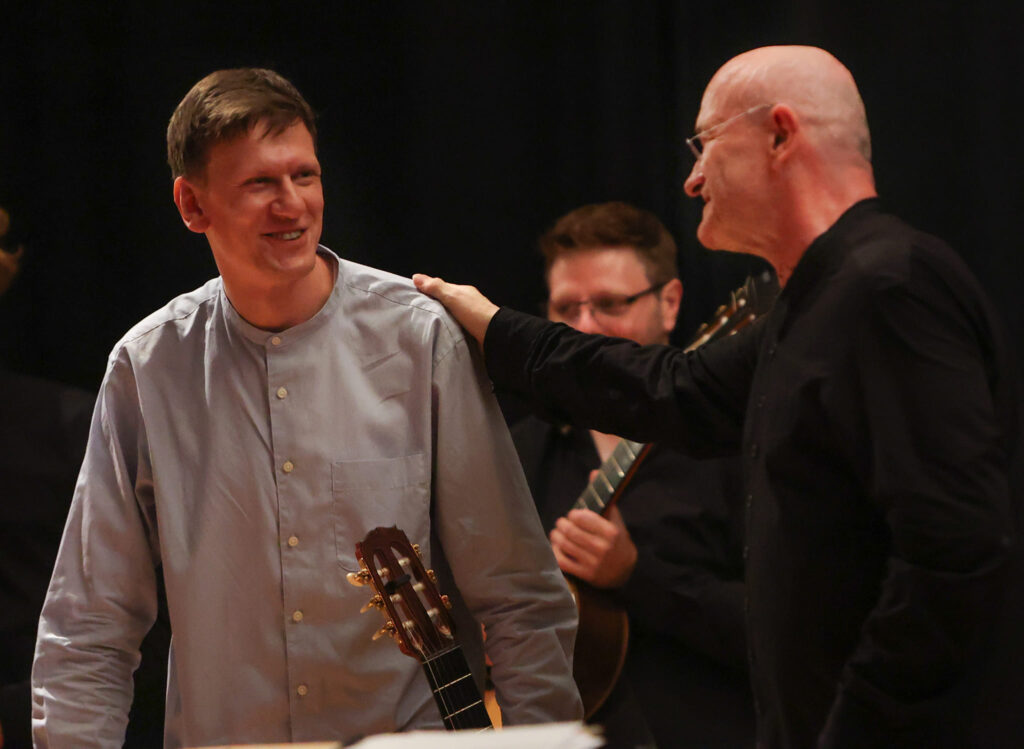
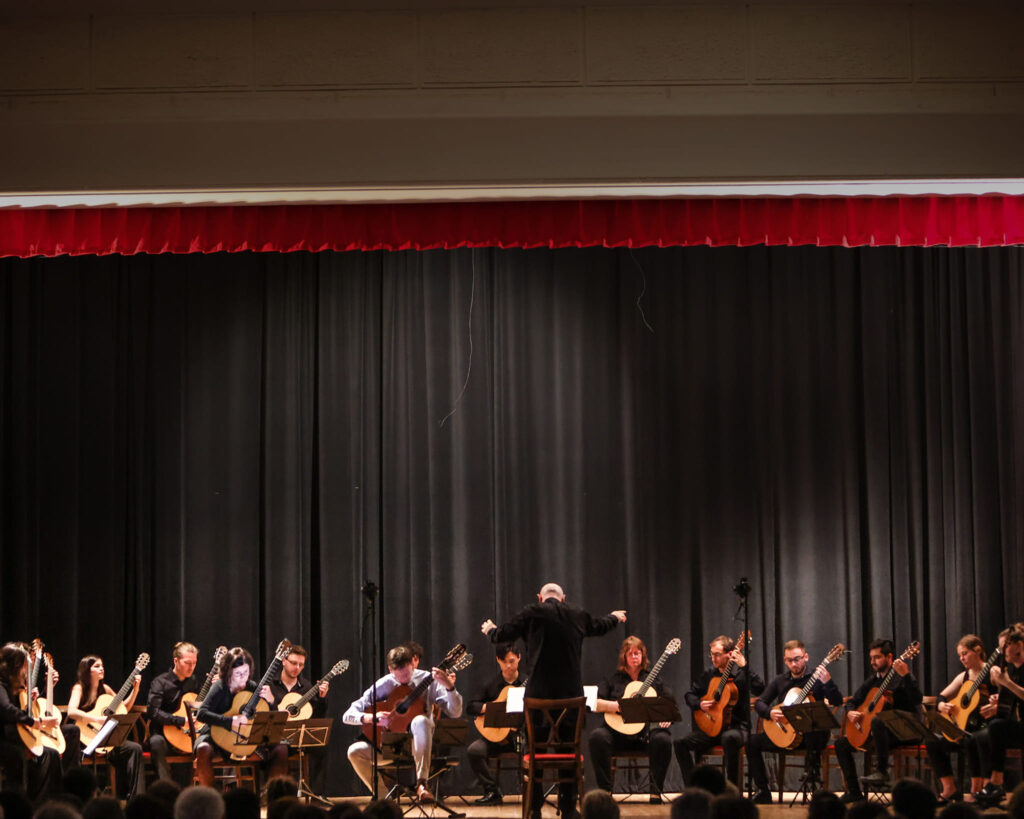
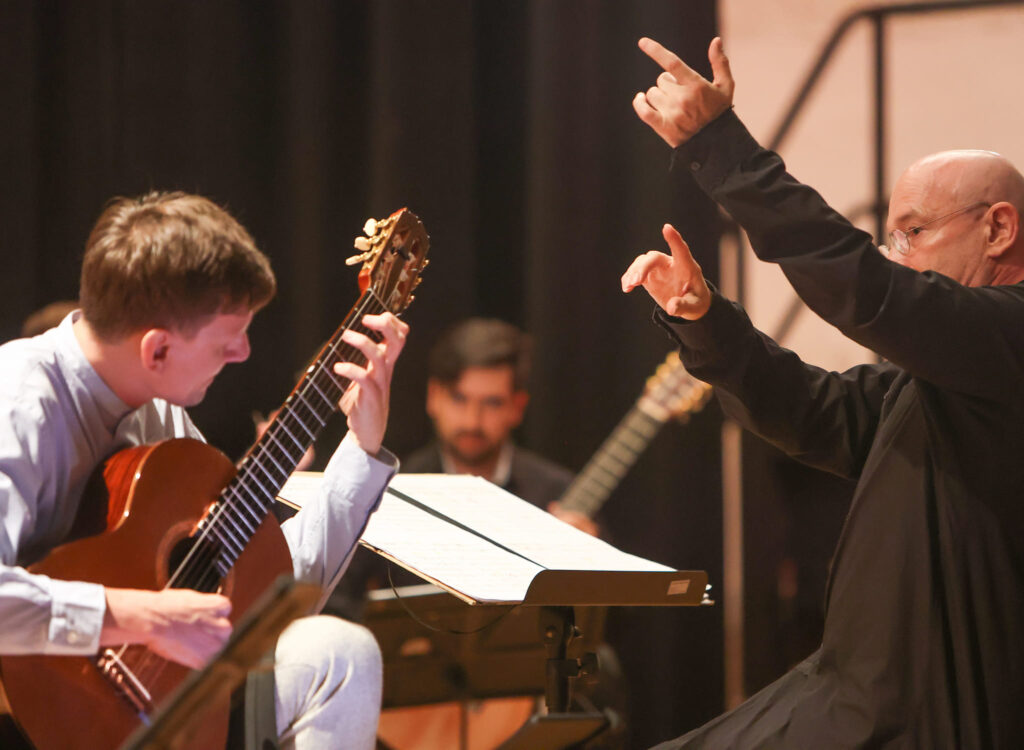
Five days of master-classes during the 35th edition of Guitar Festival Mikulov in Czech Republic.
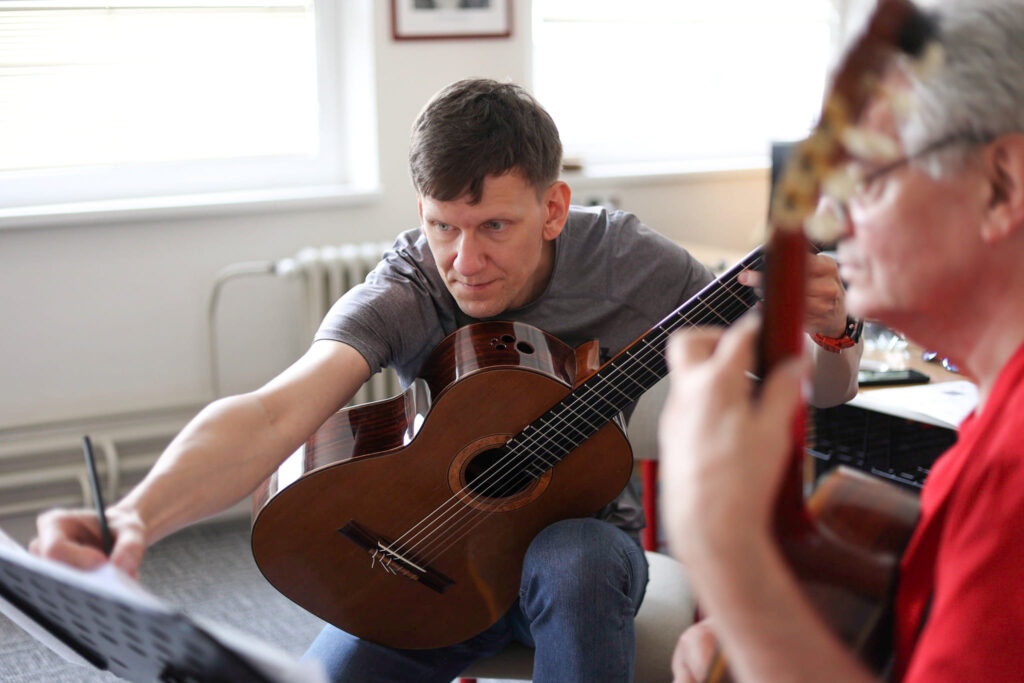
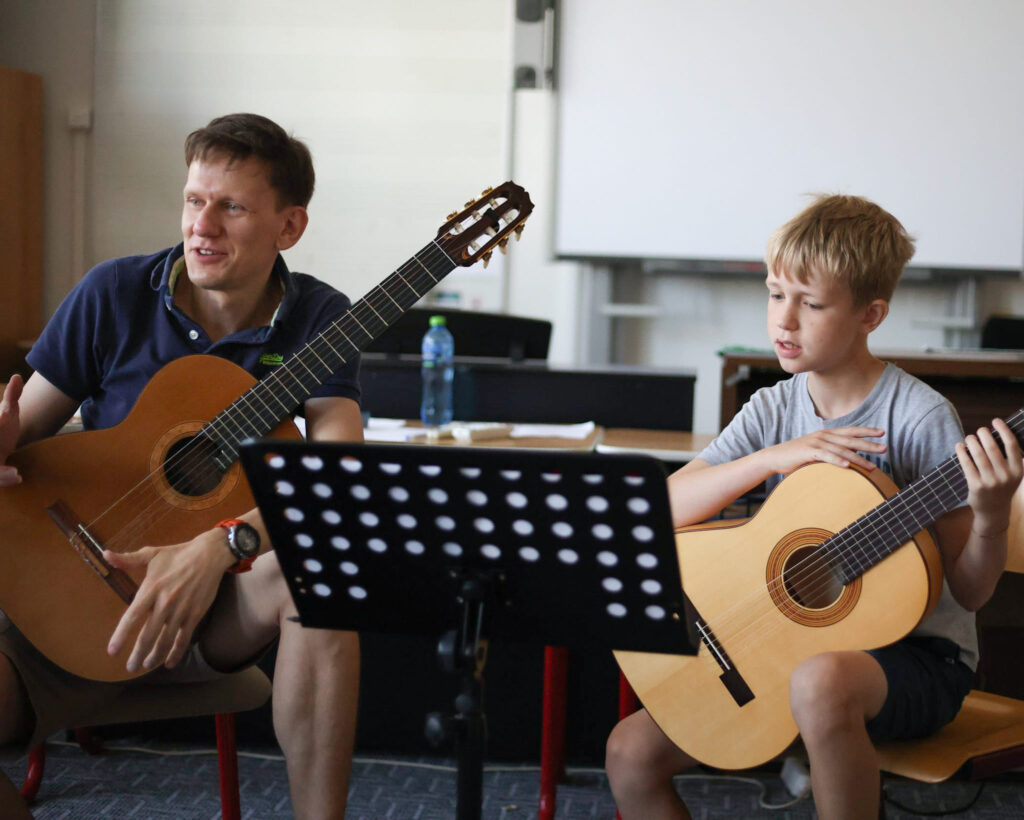

Dumnie wspierane przez WordPressa | Motyw: Baskerville 2. Autor motywu: Anders Noren.